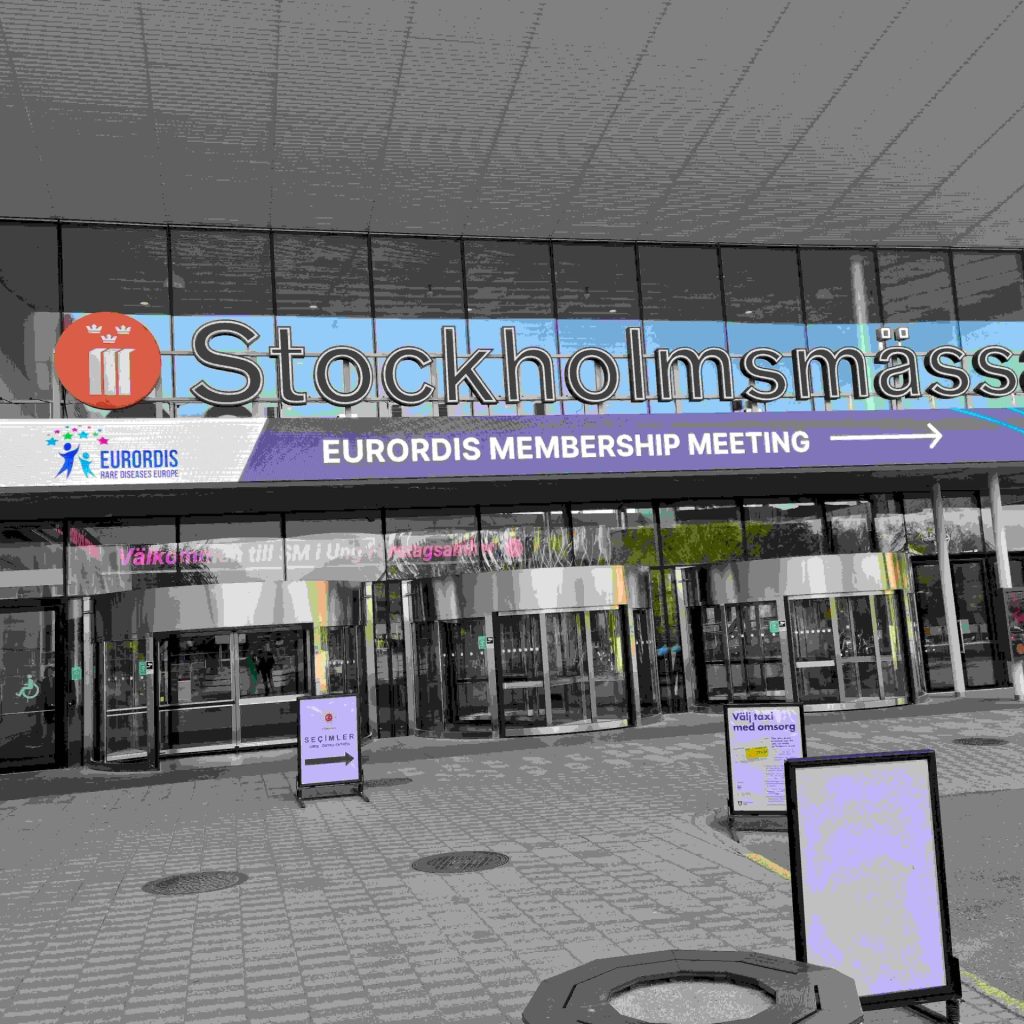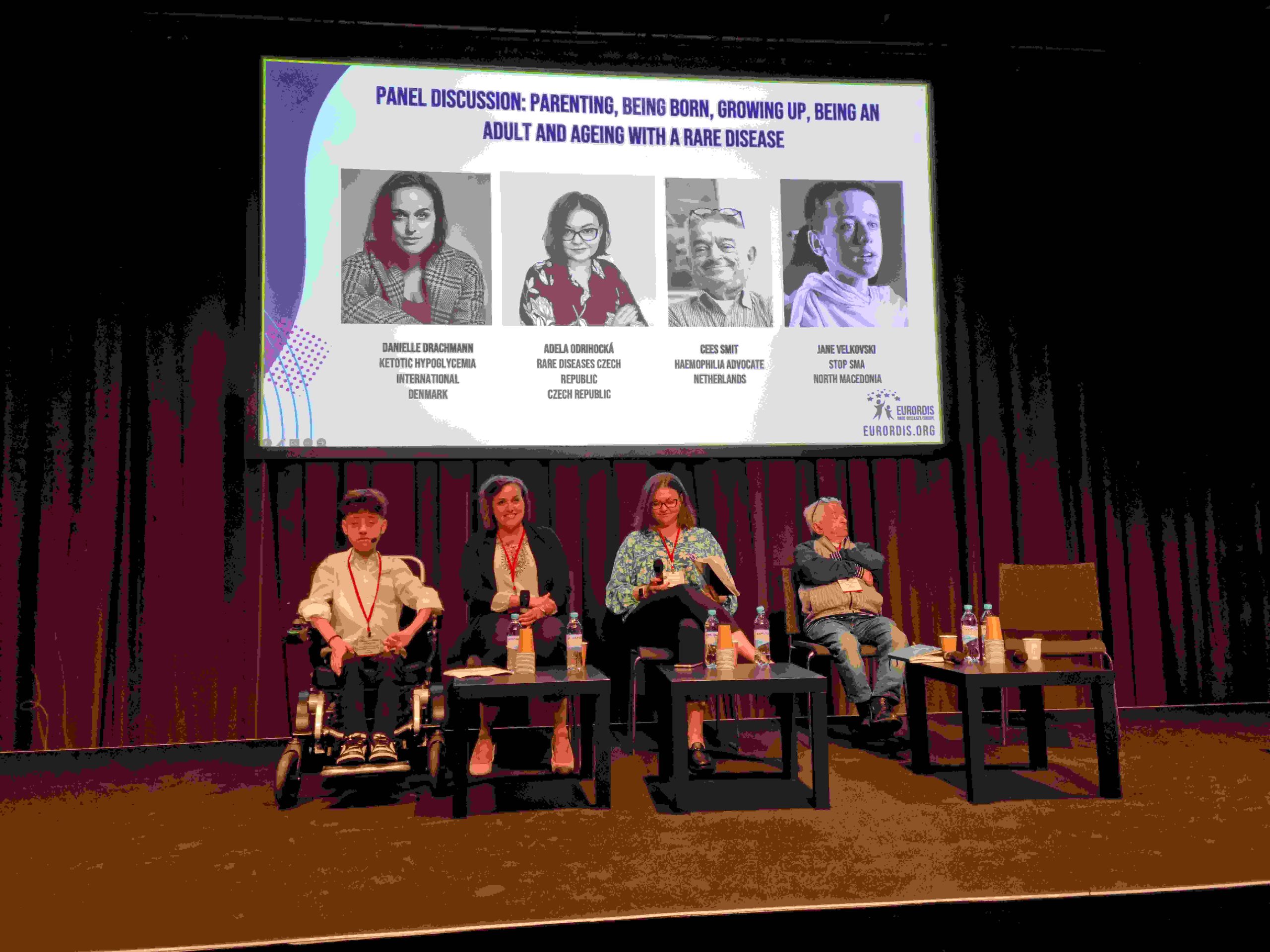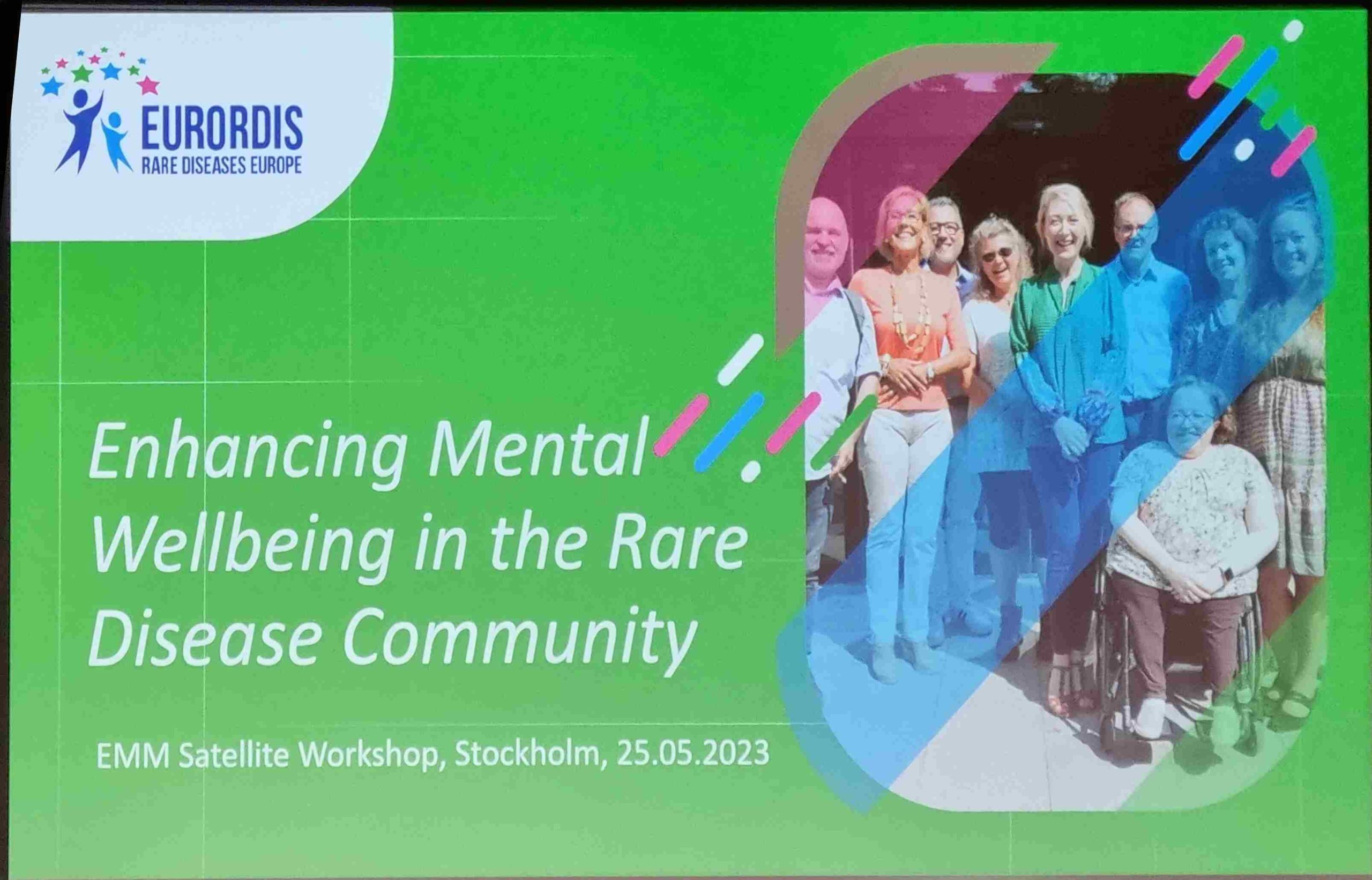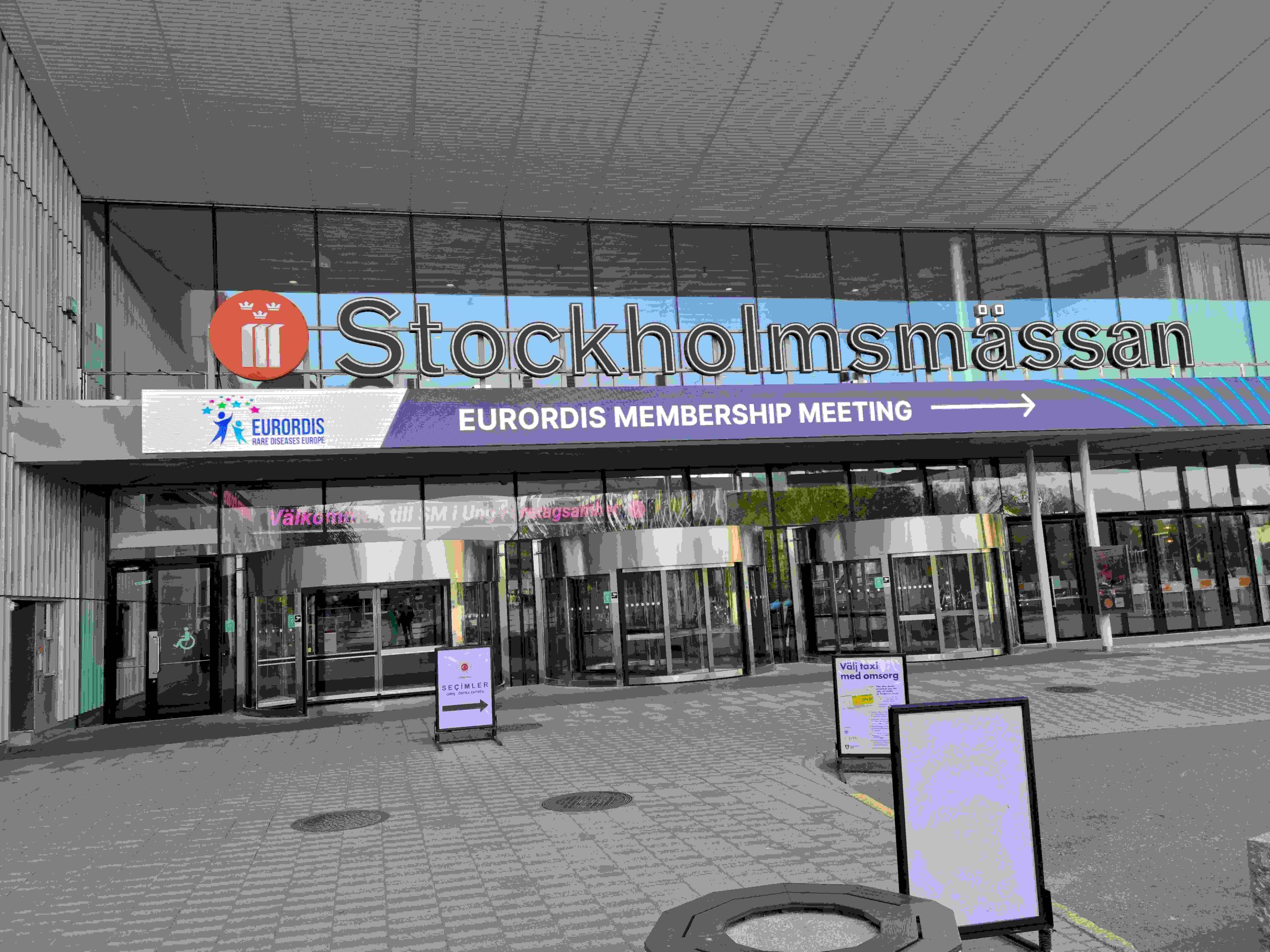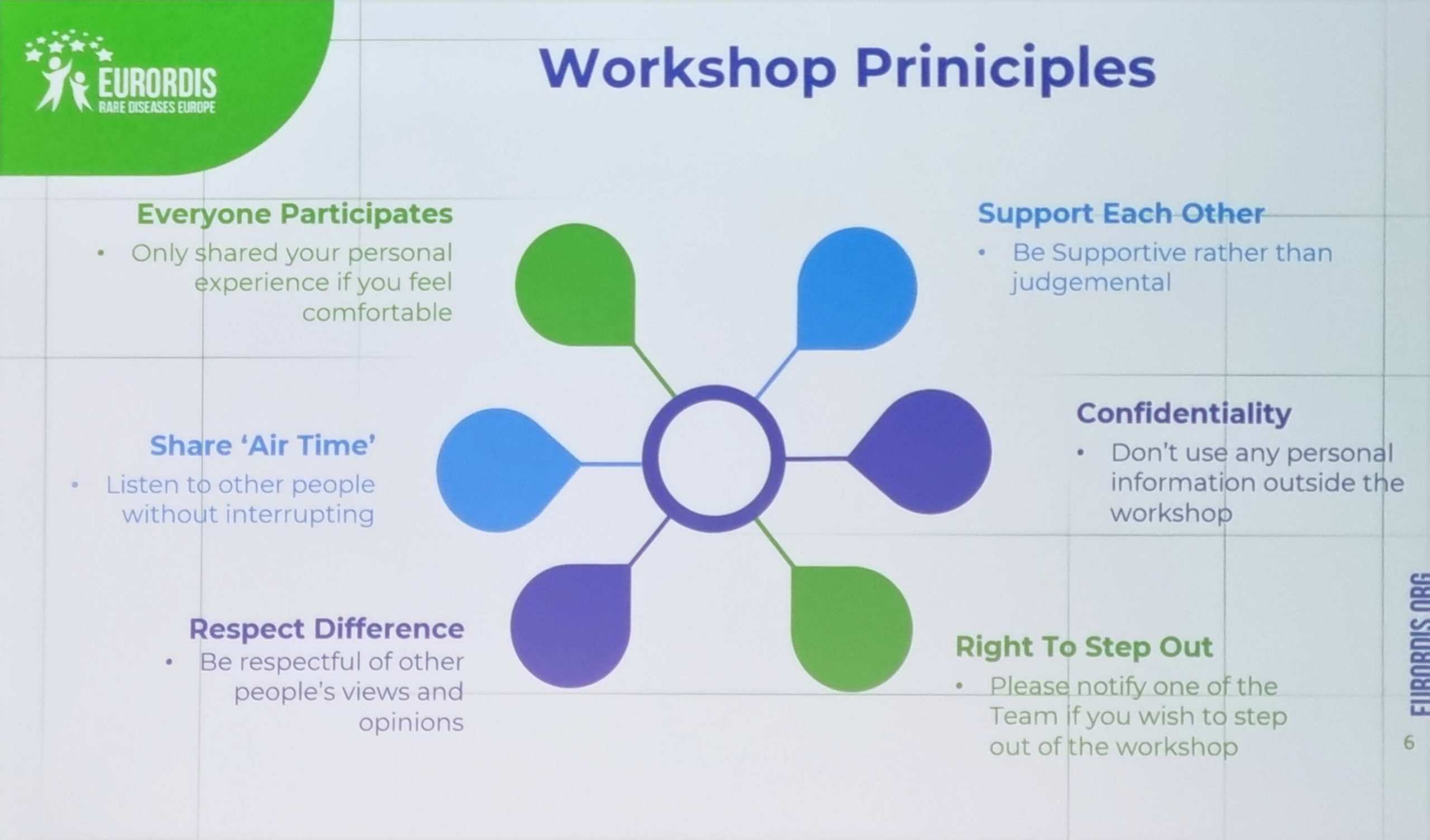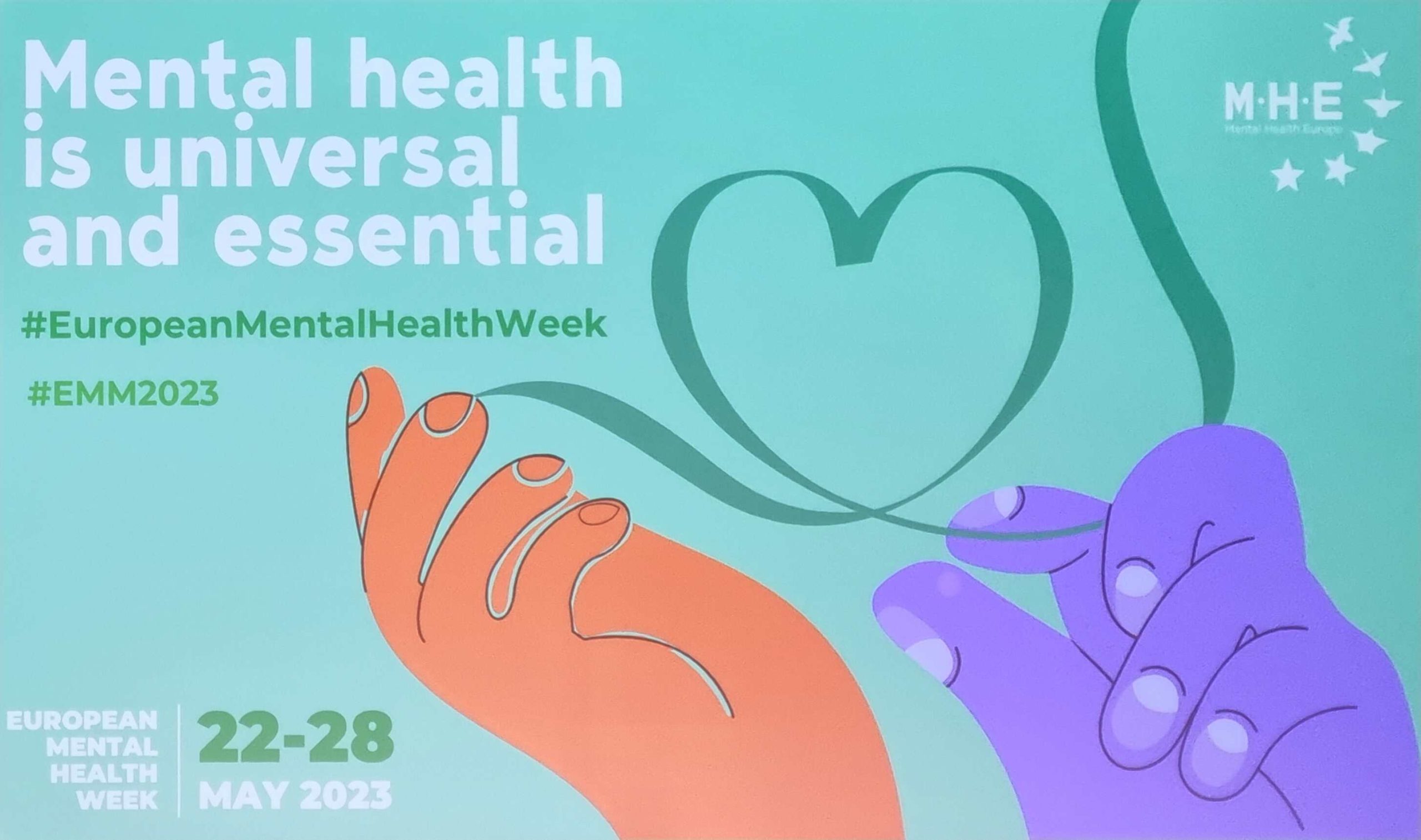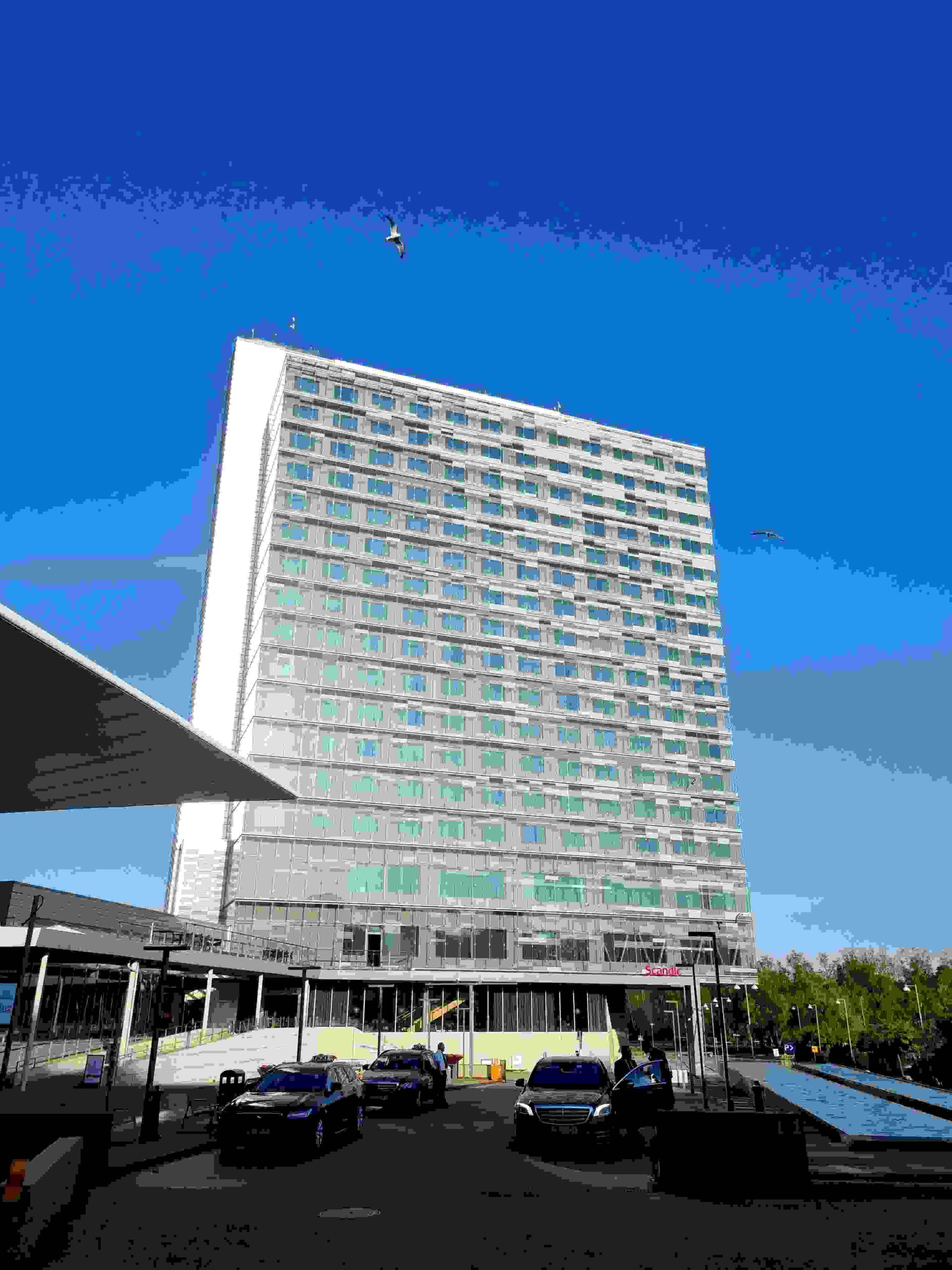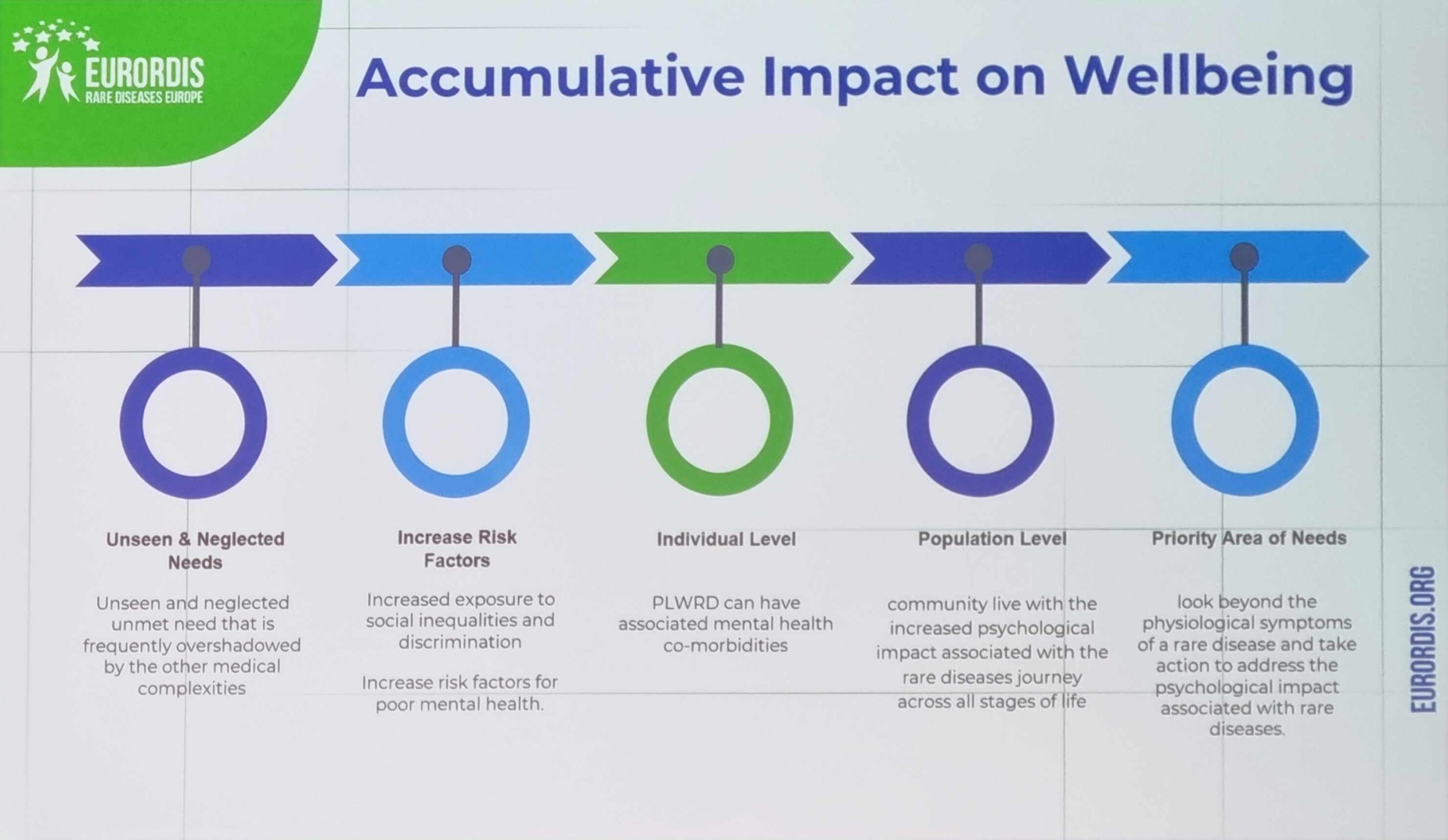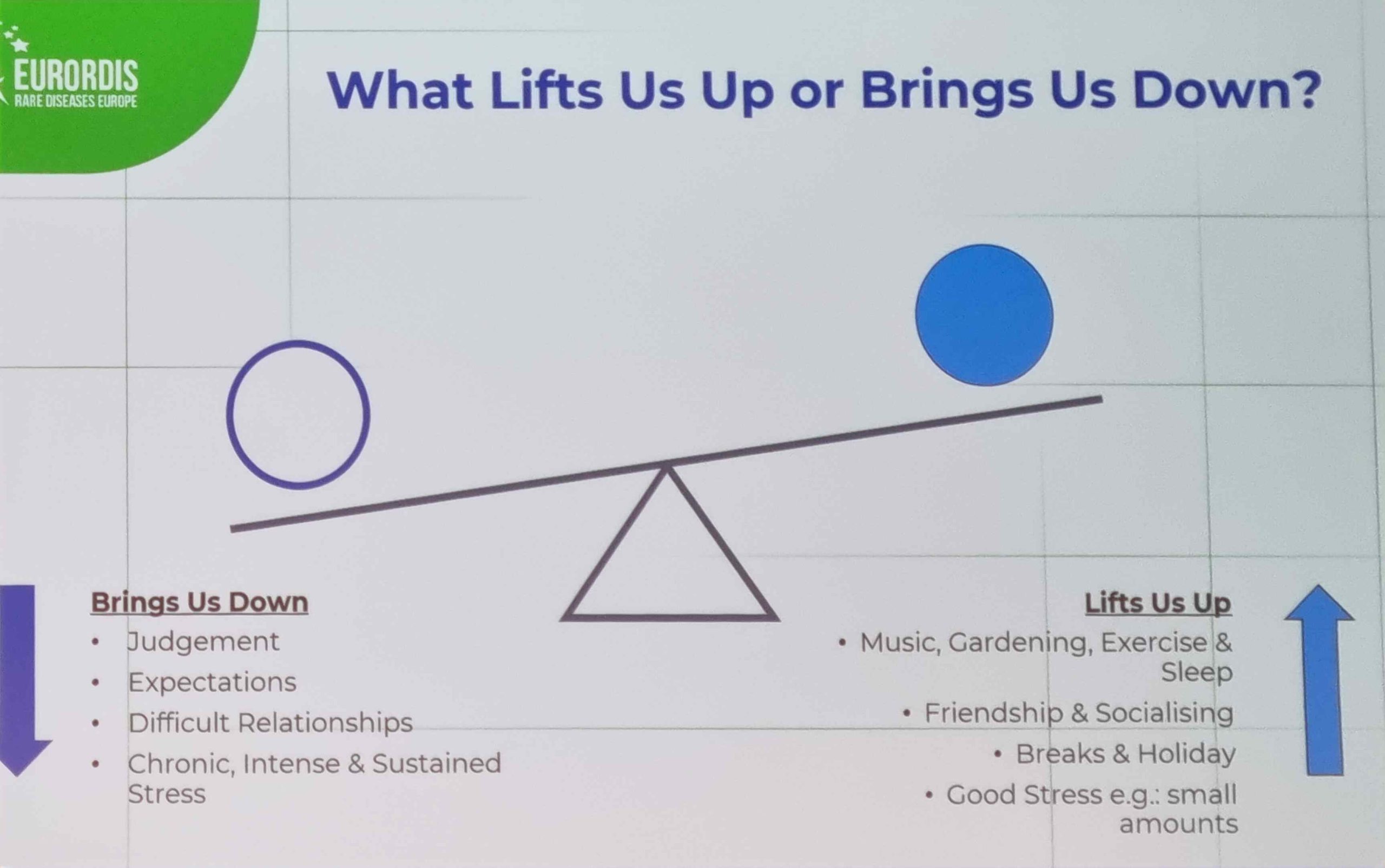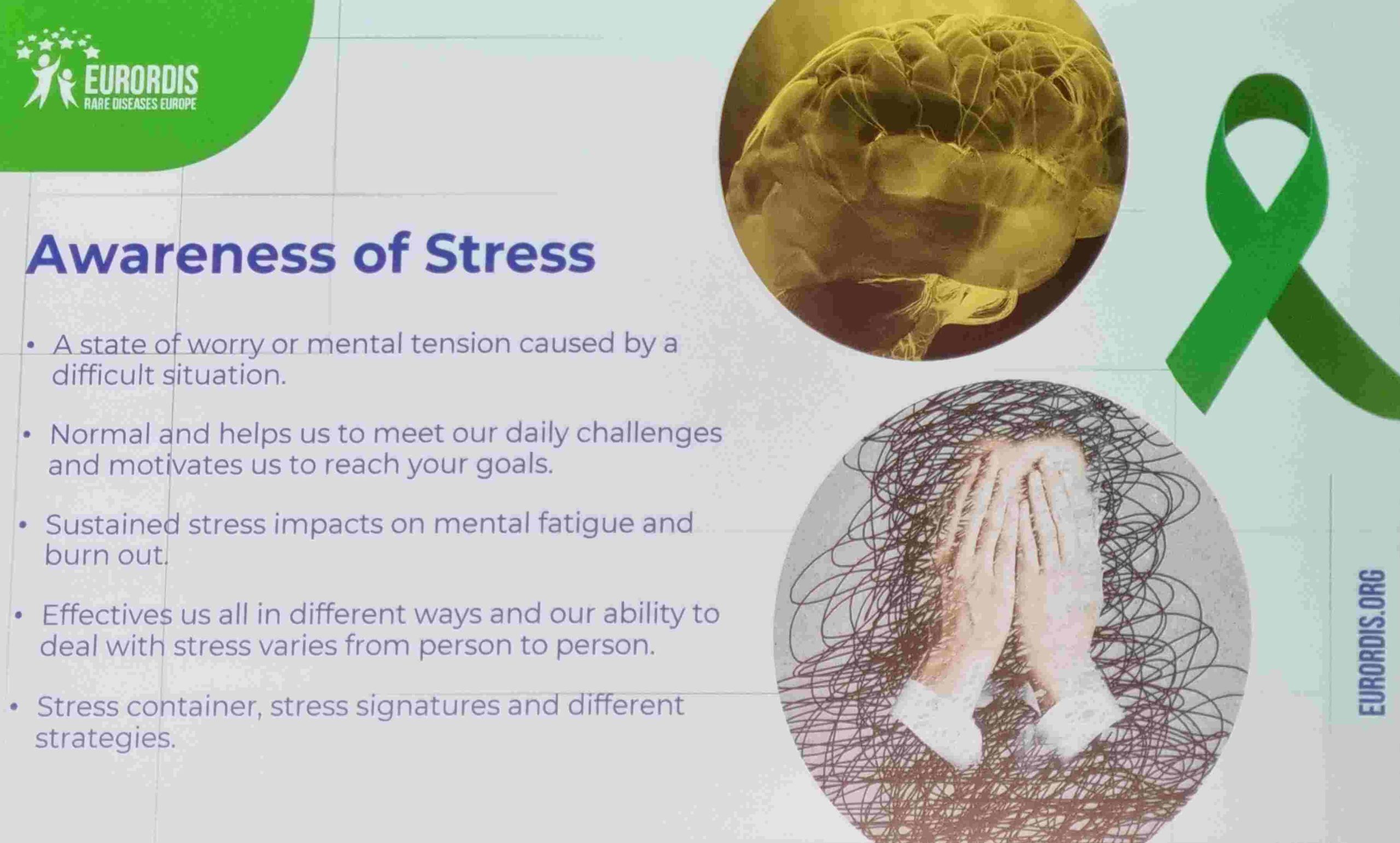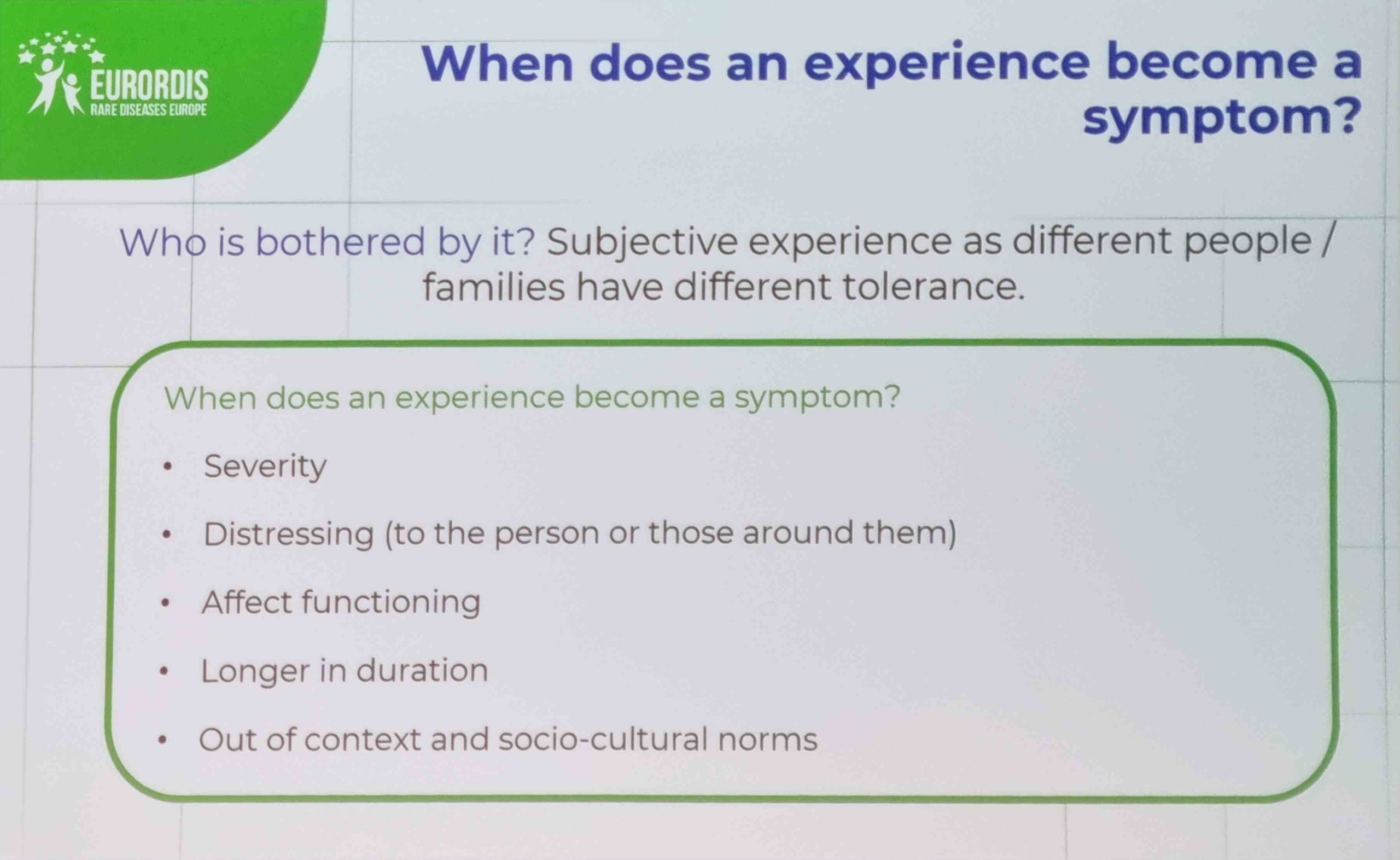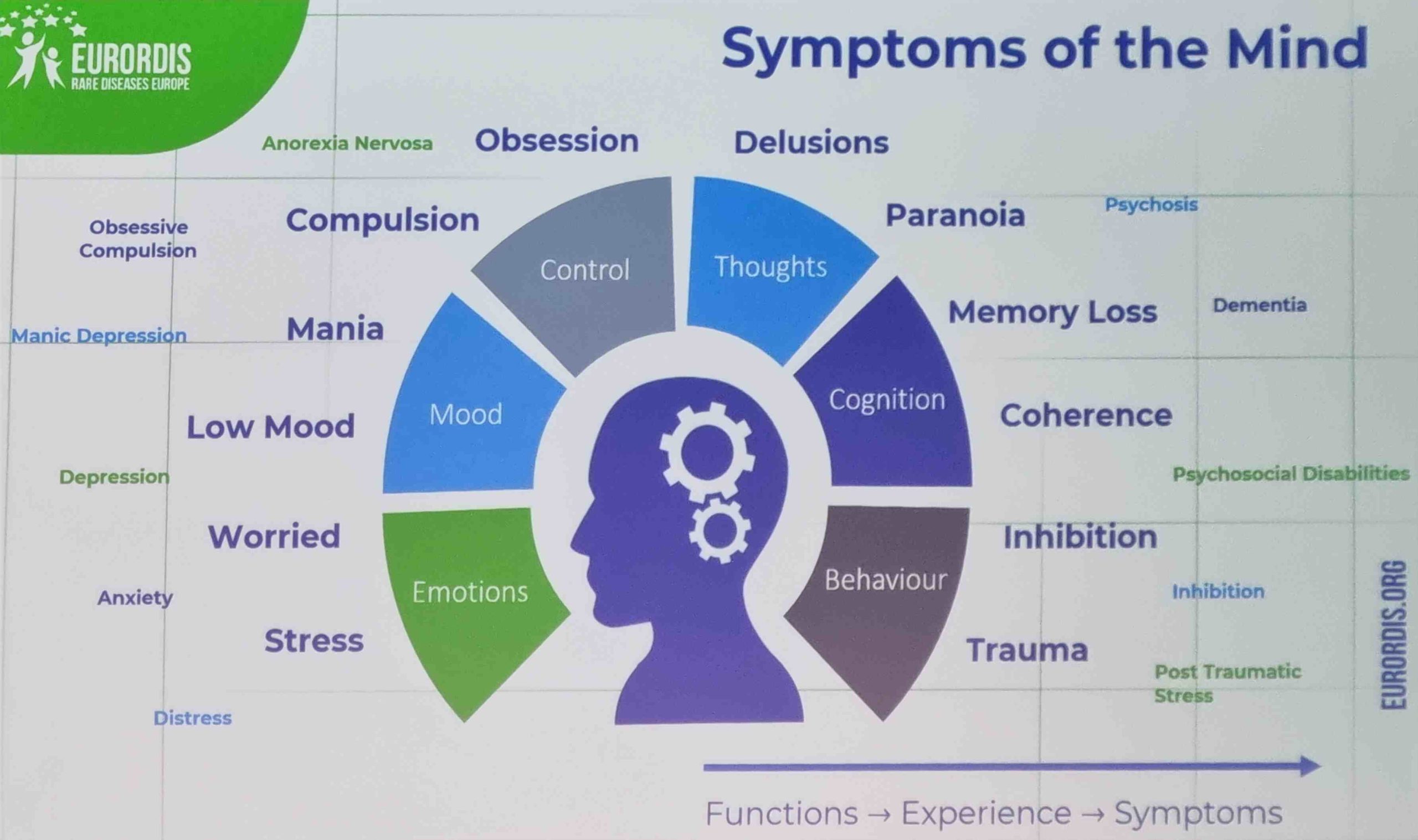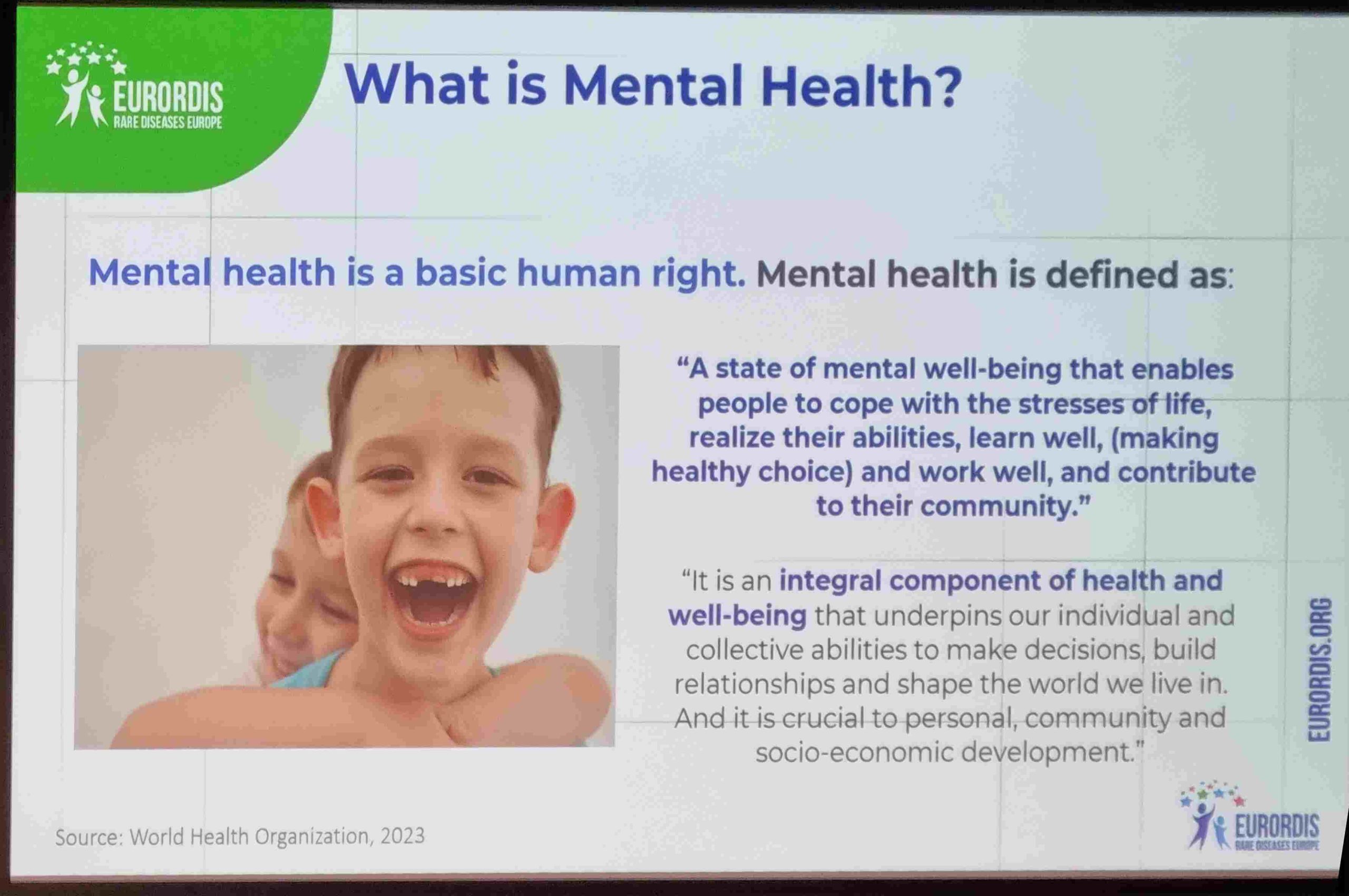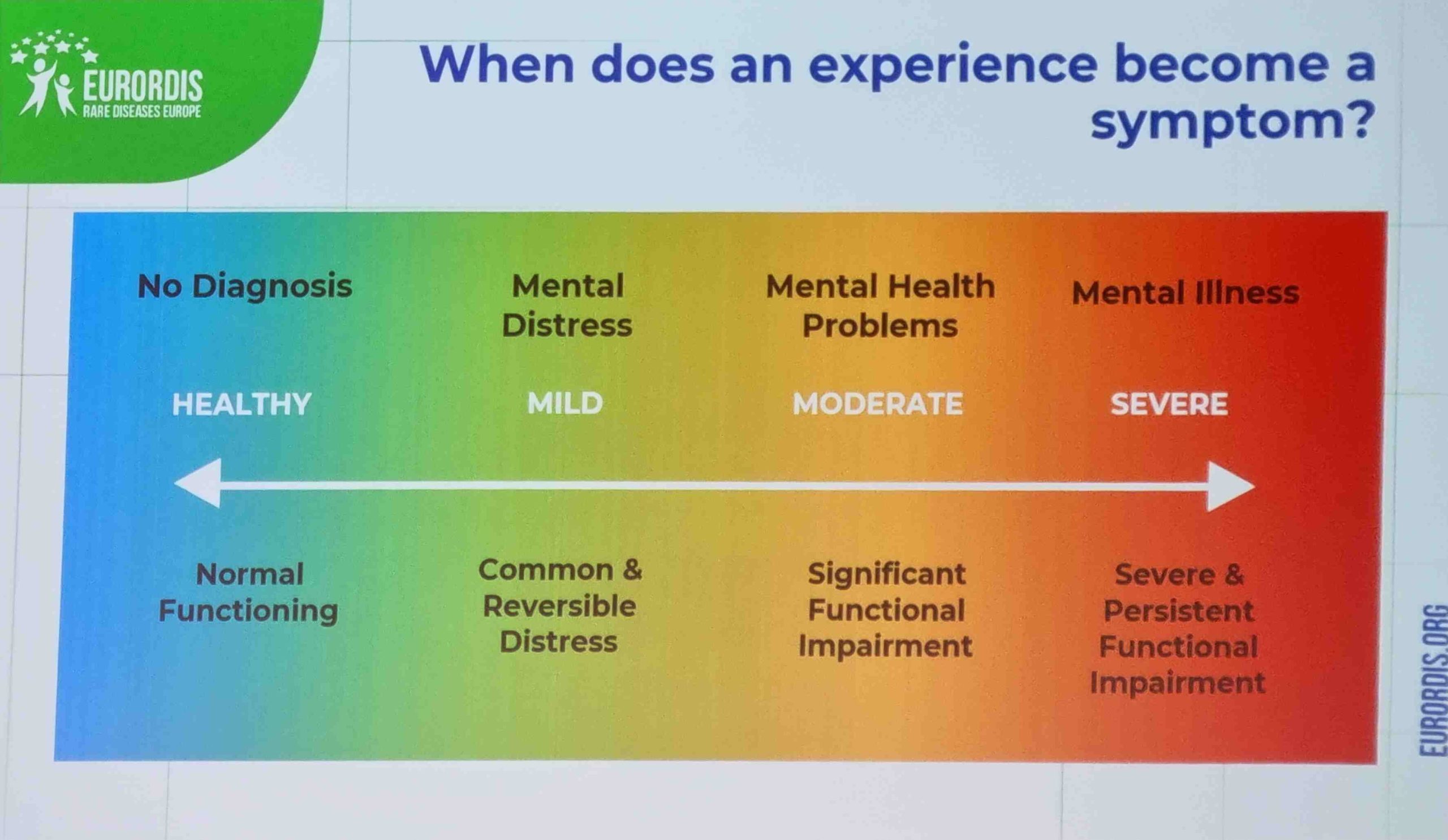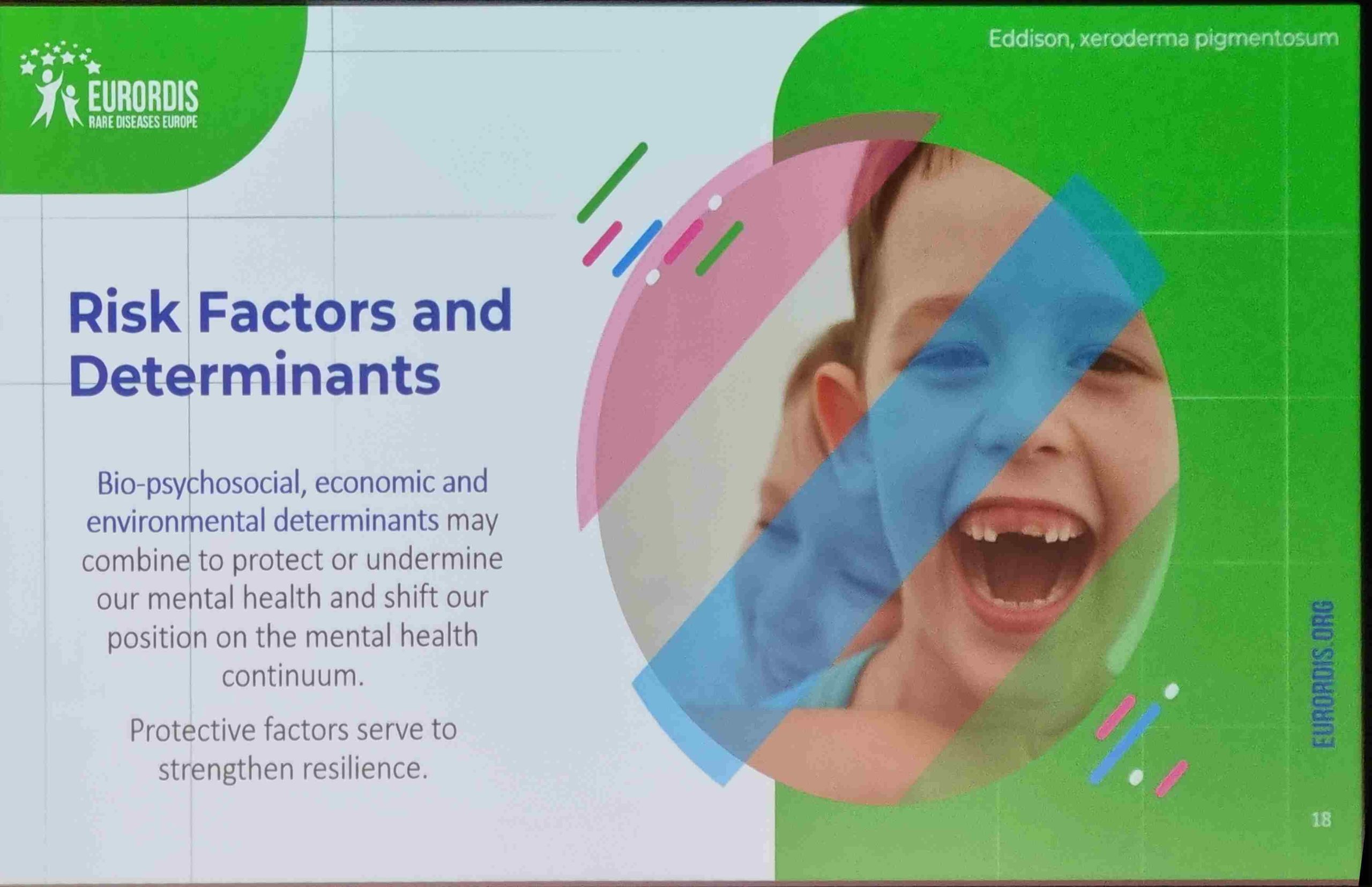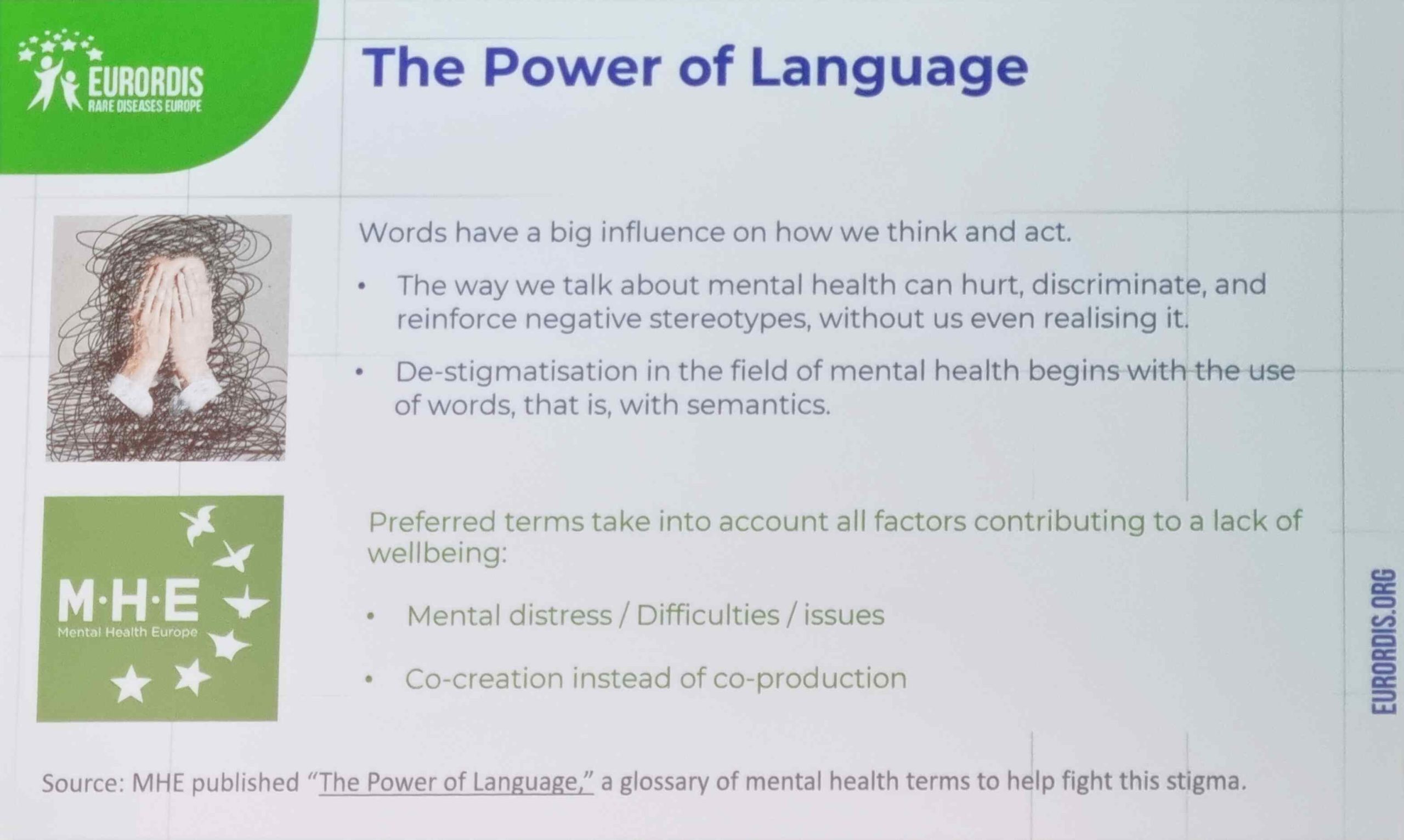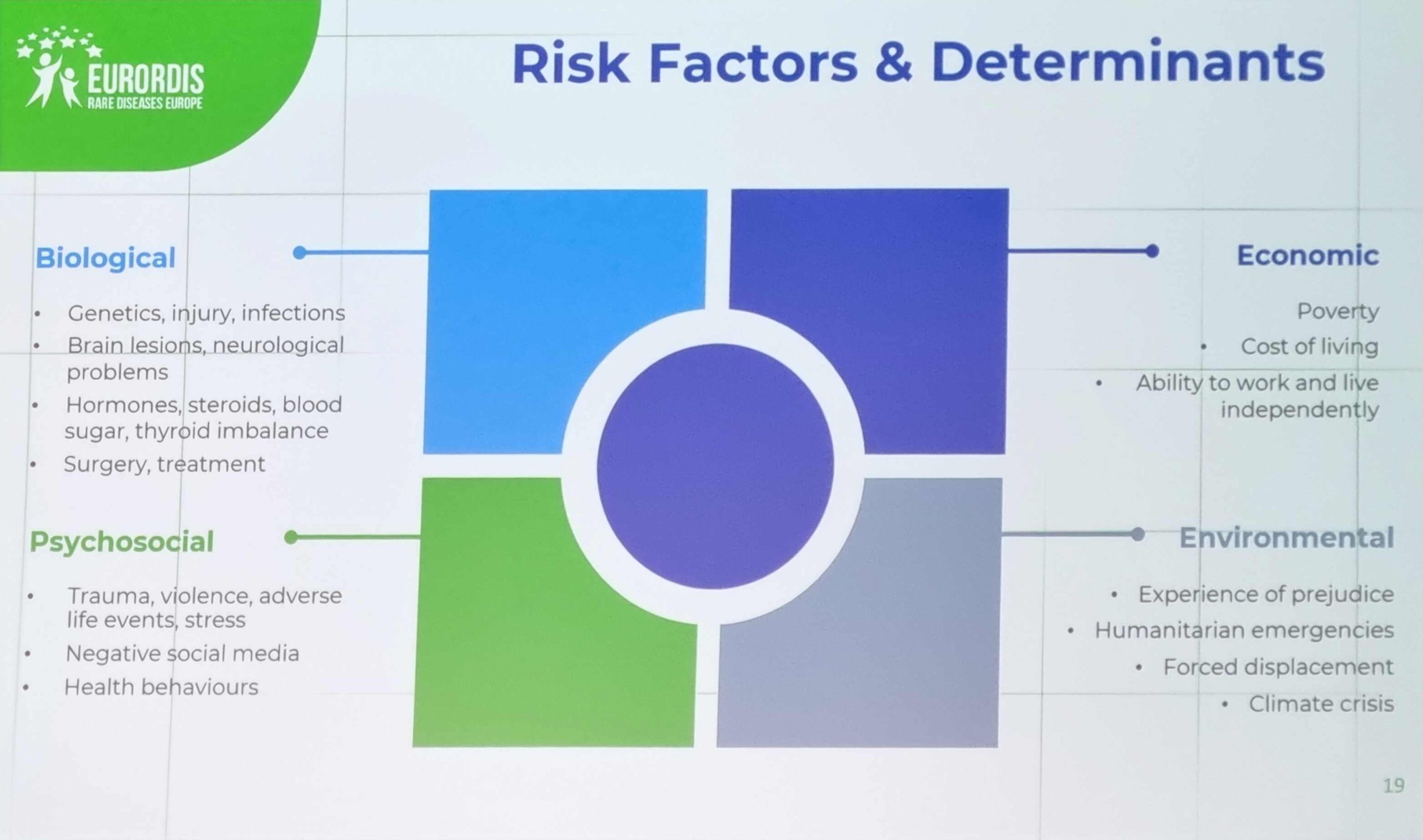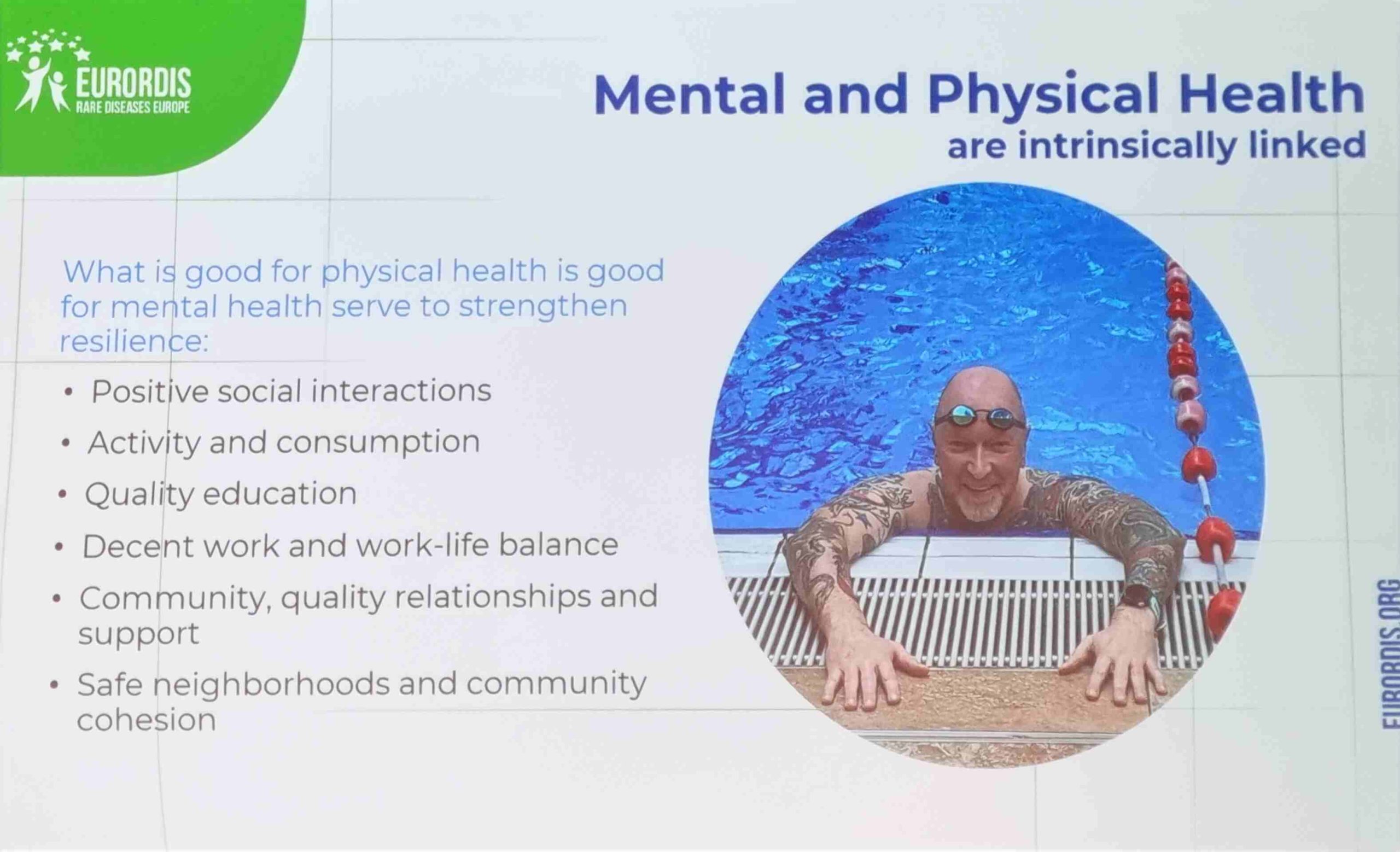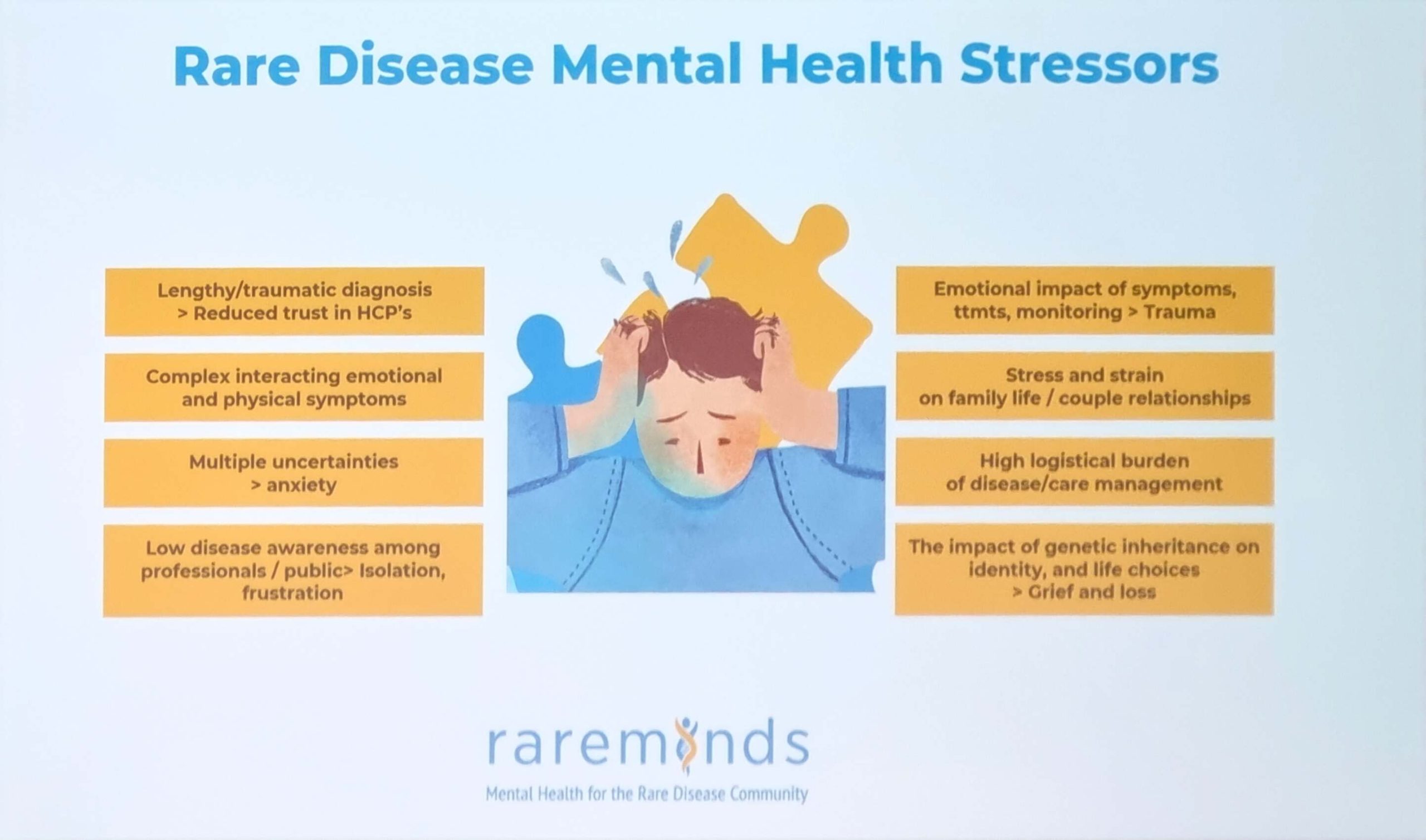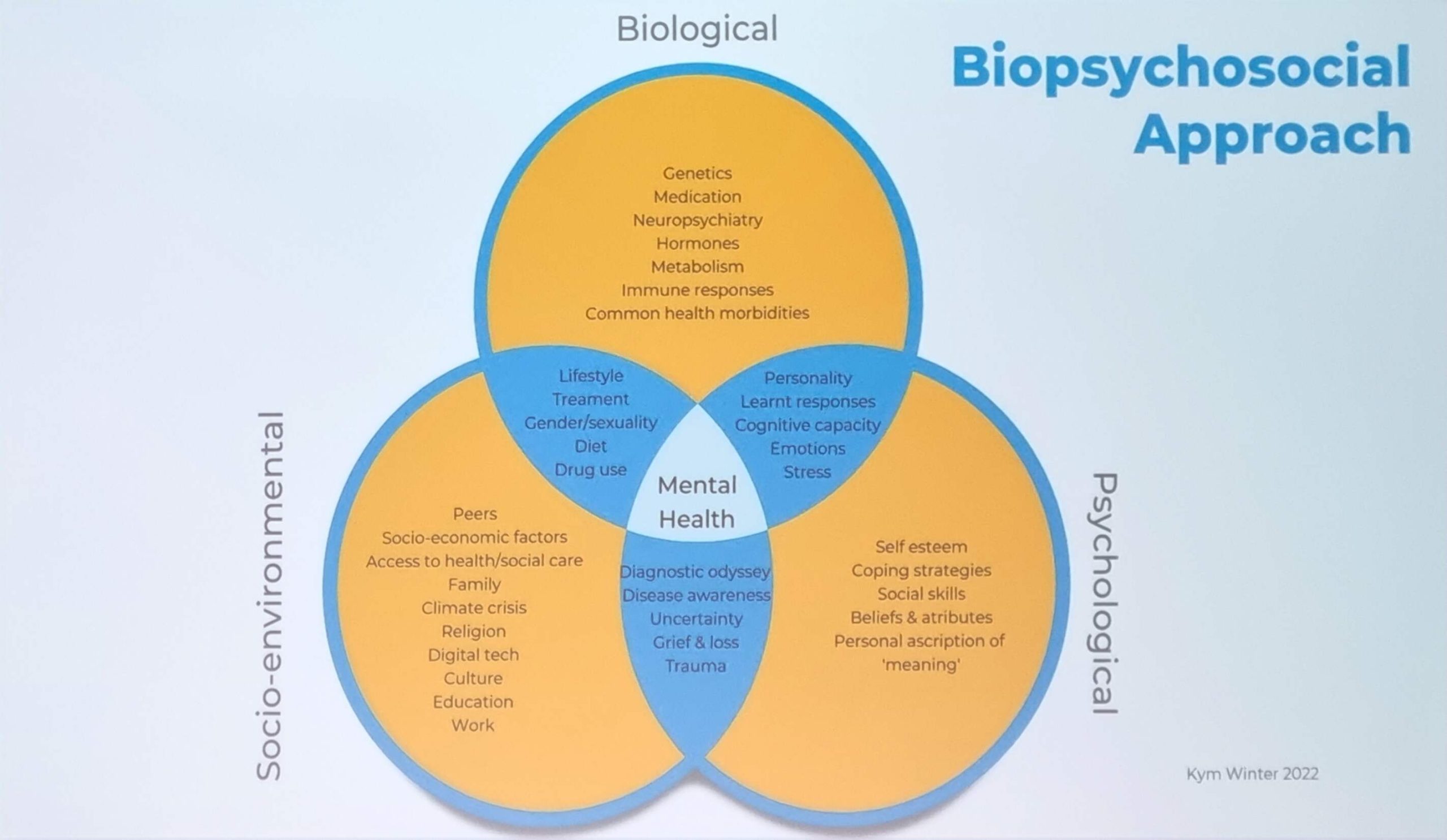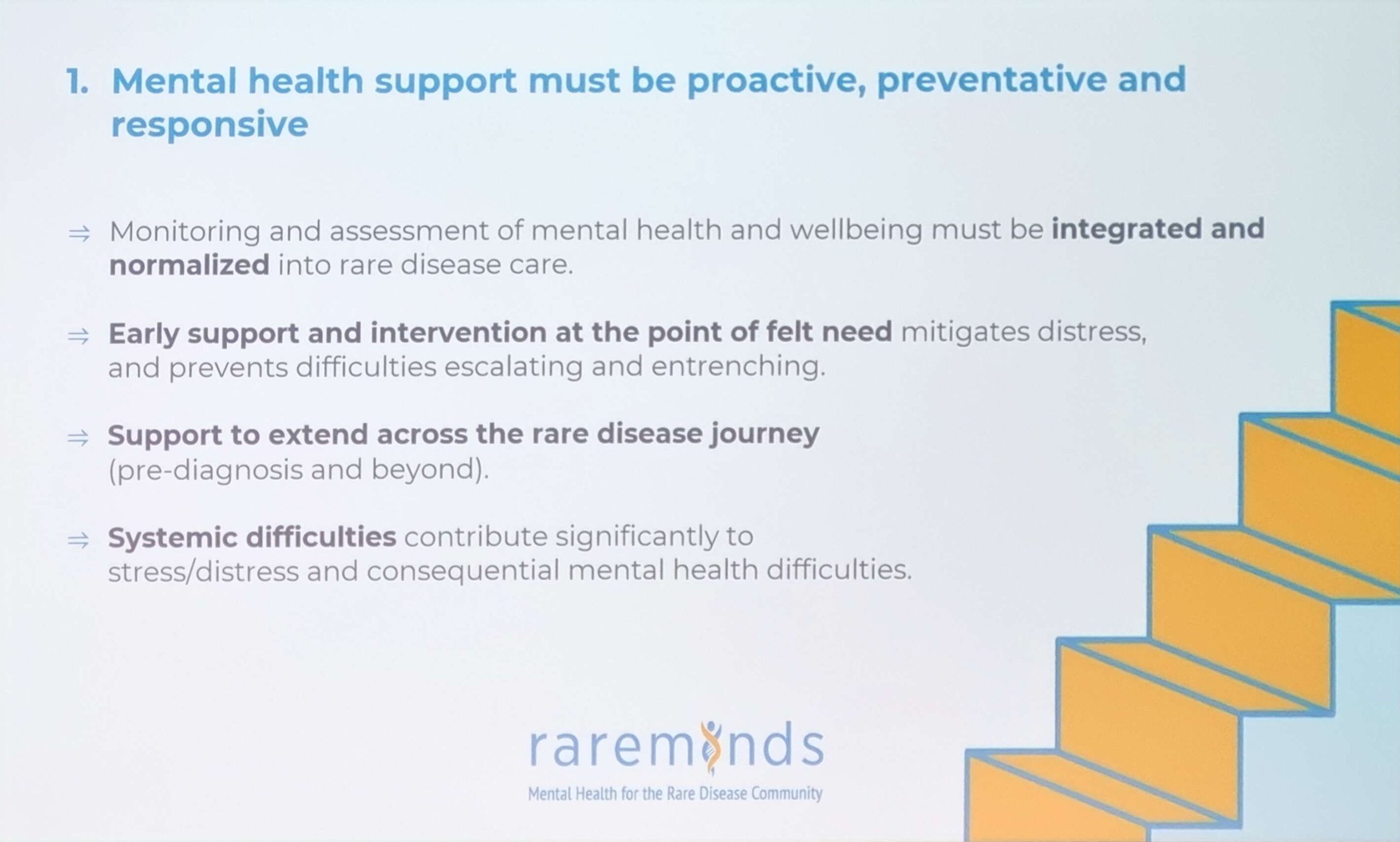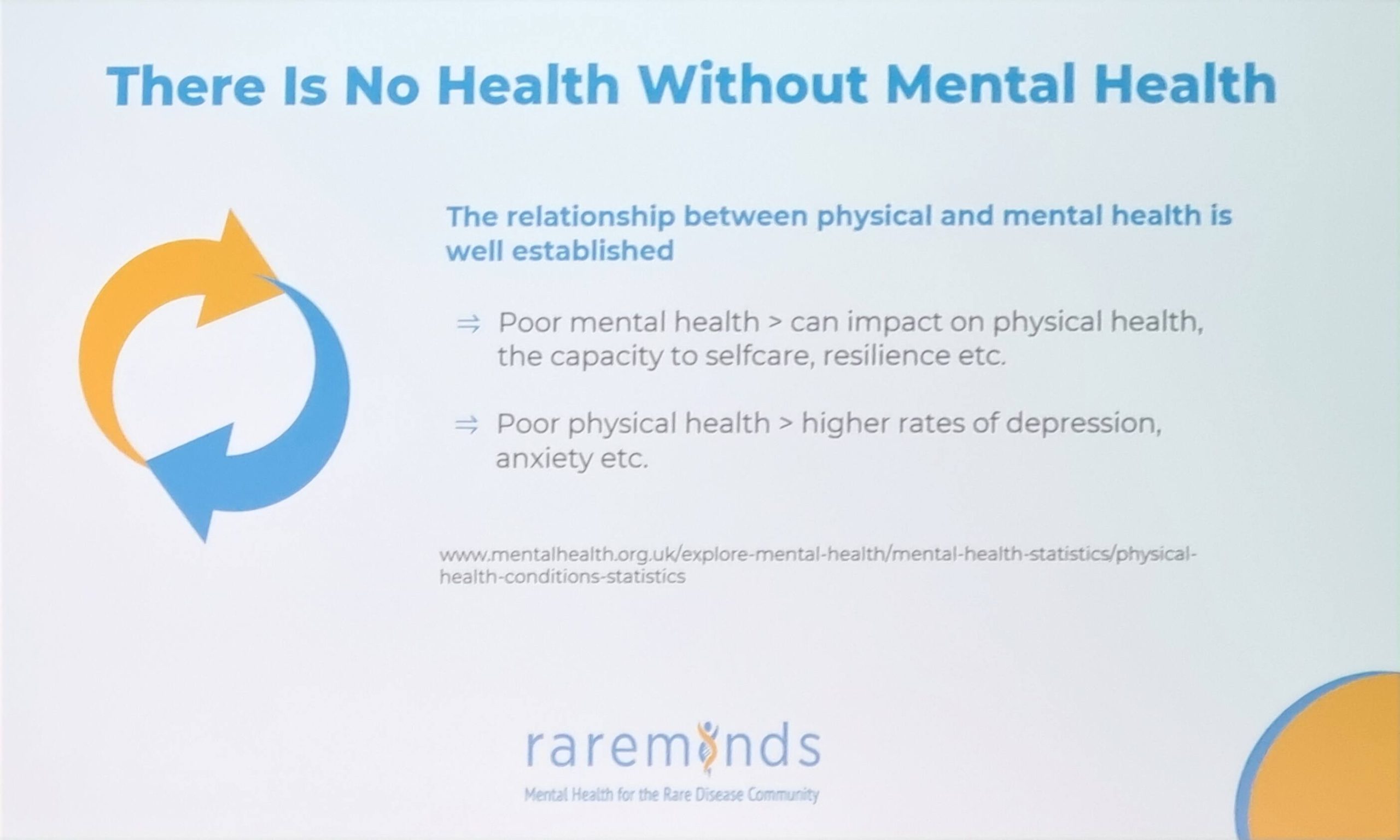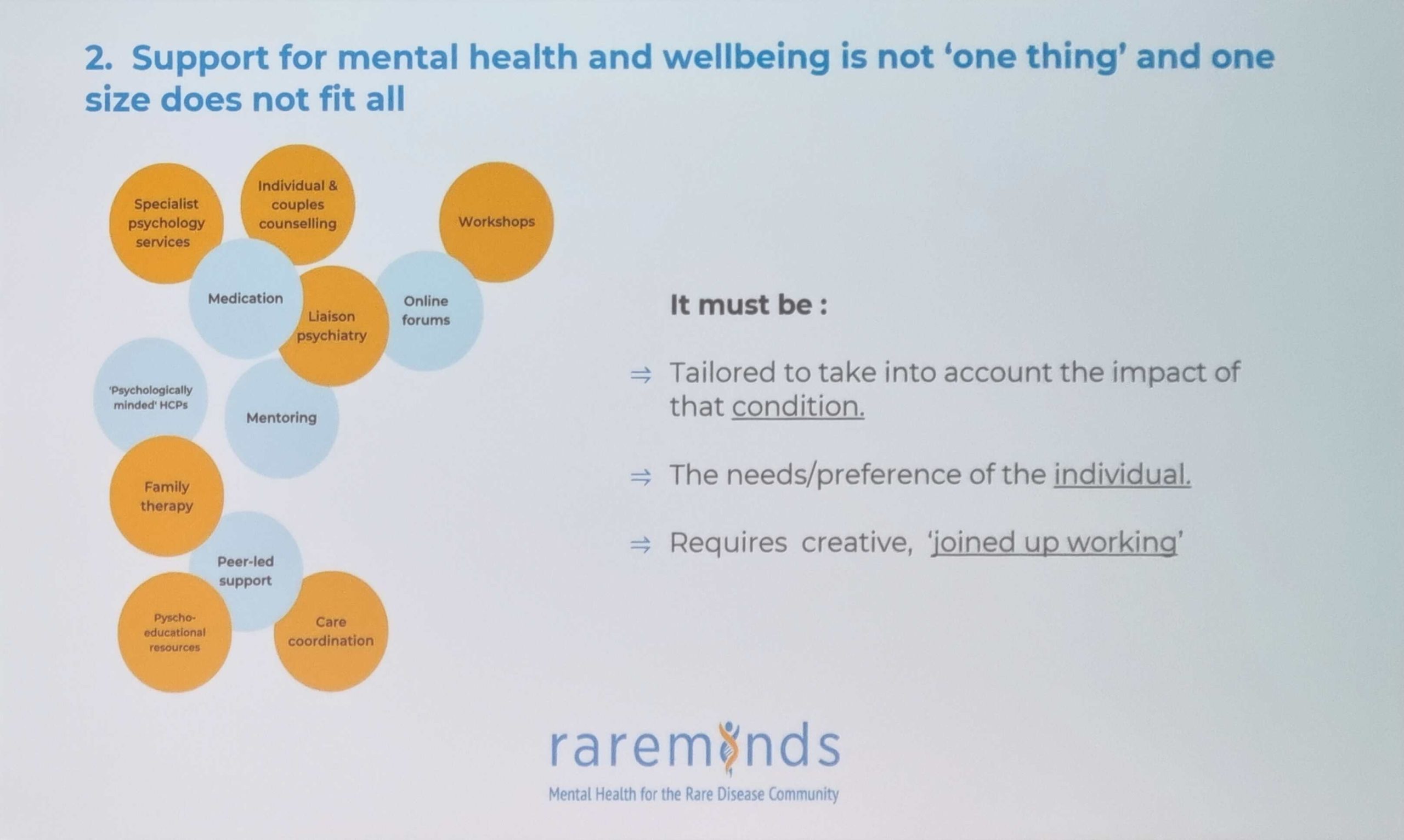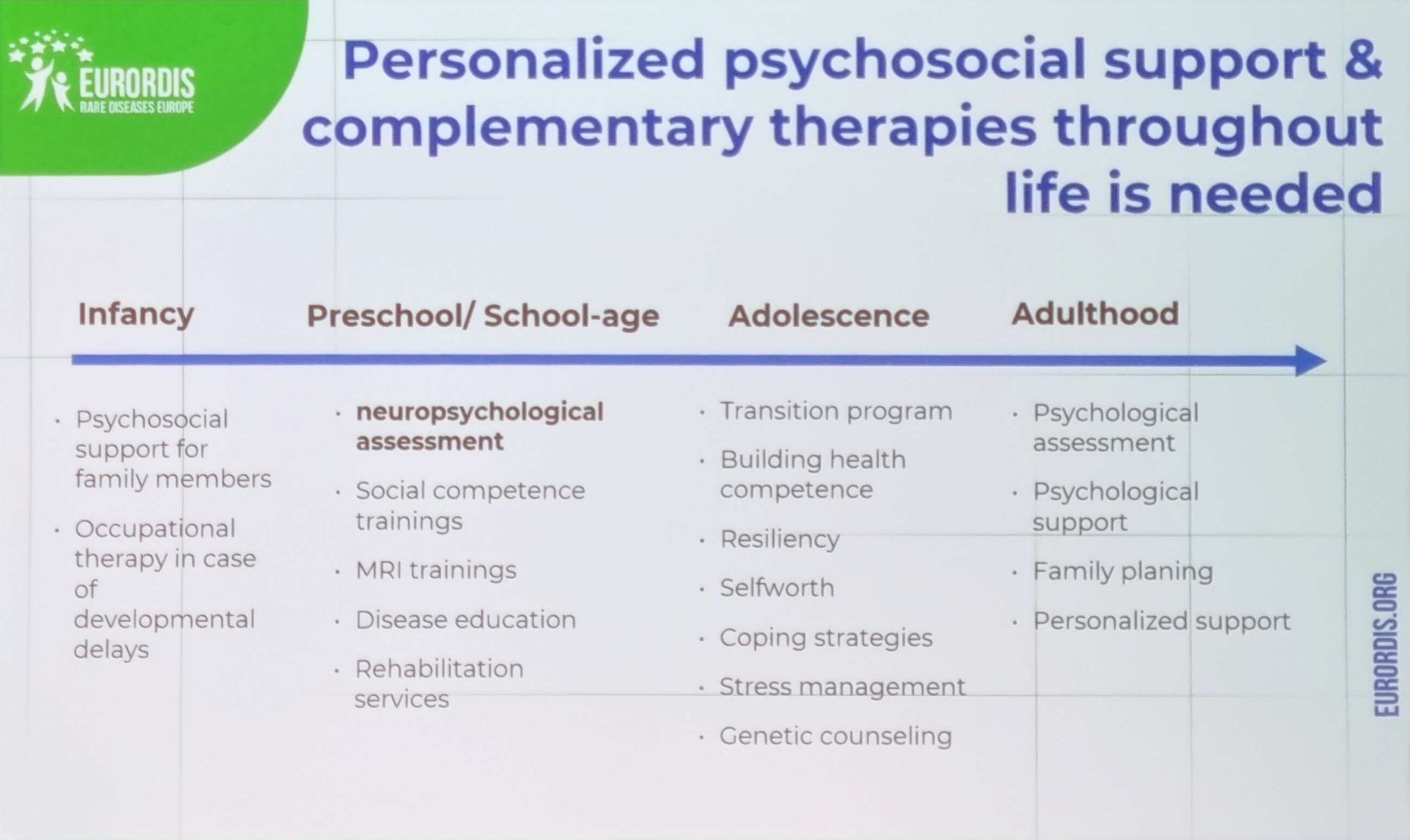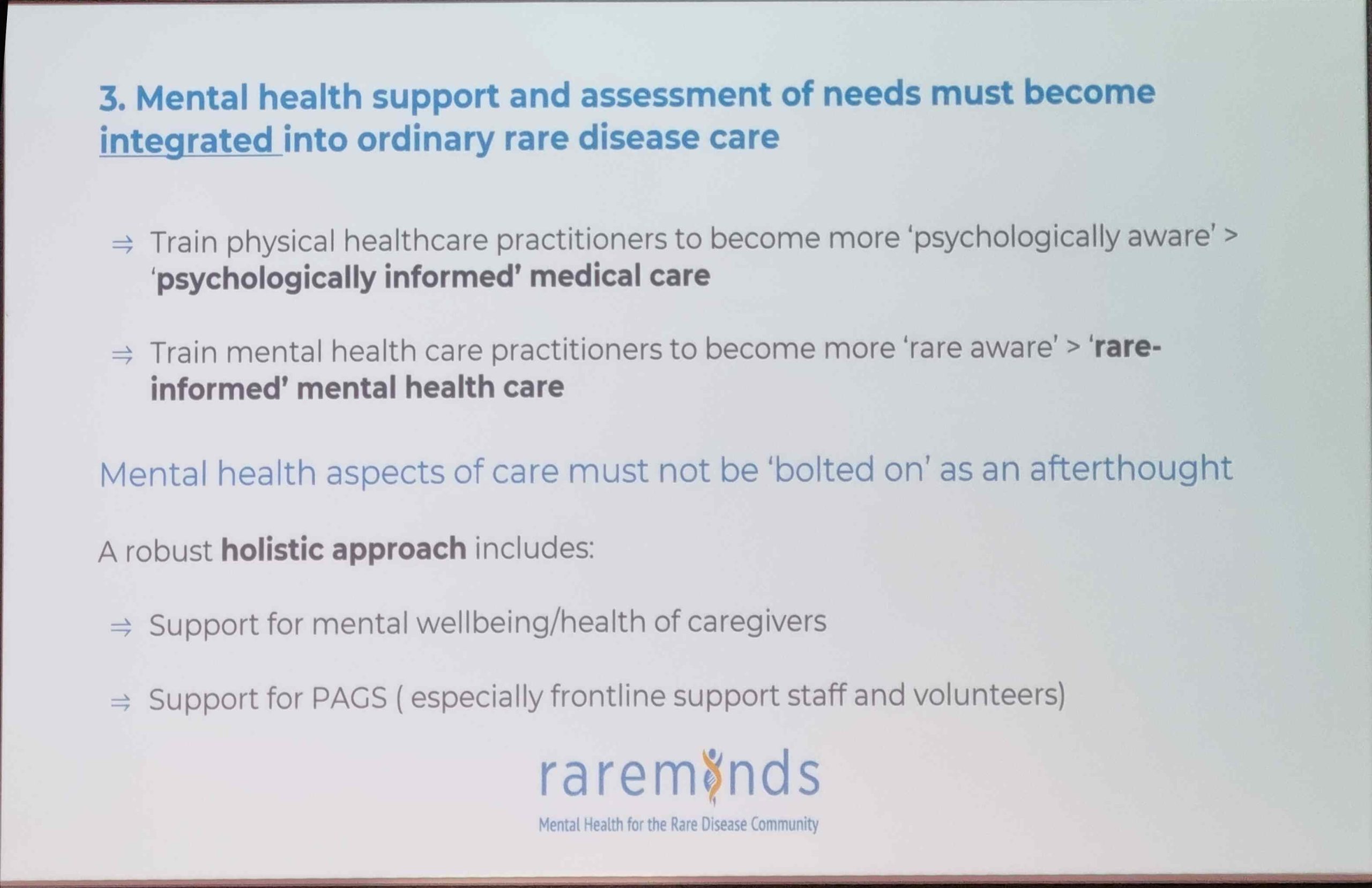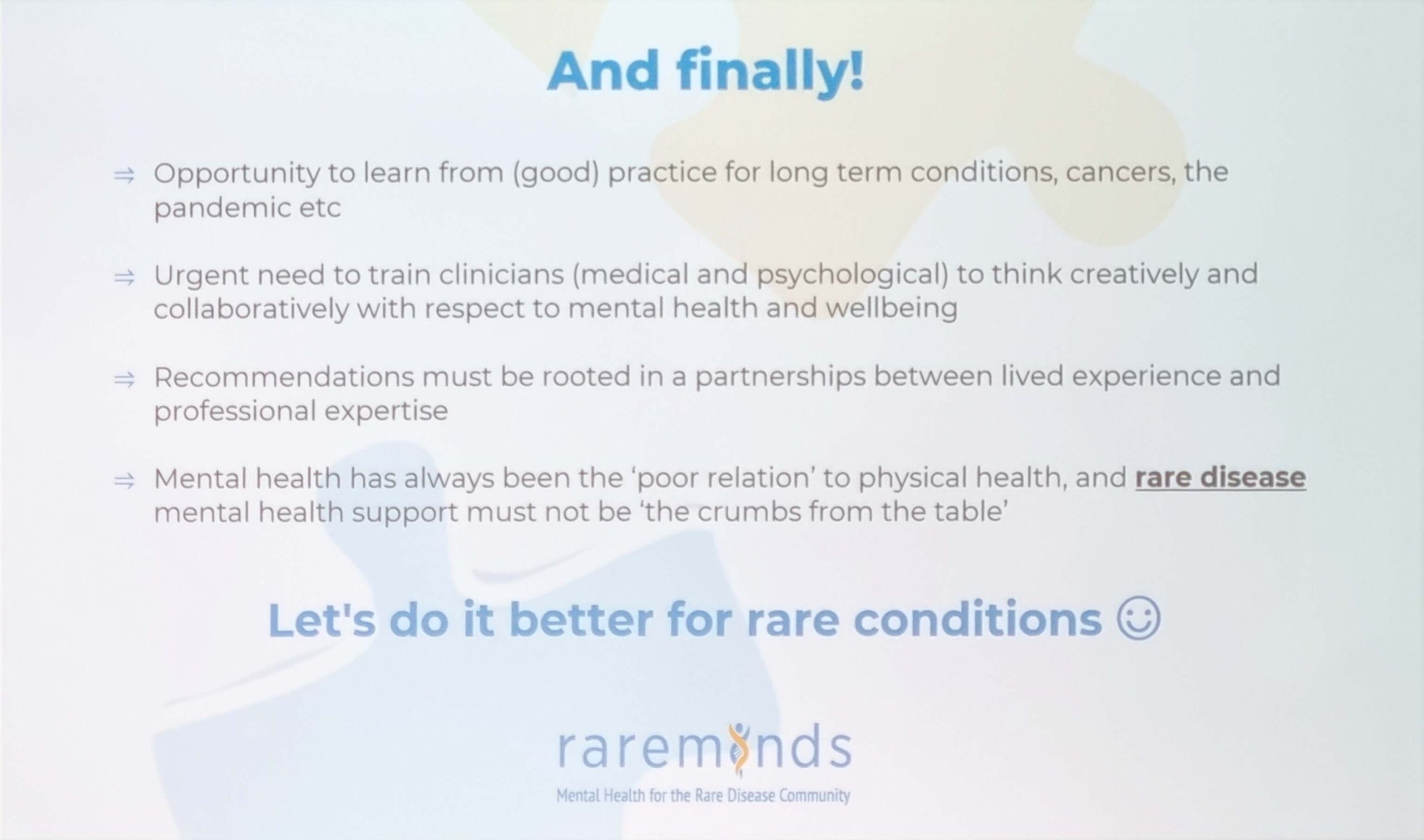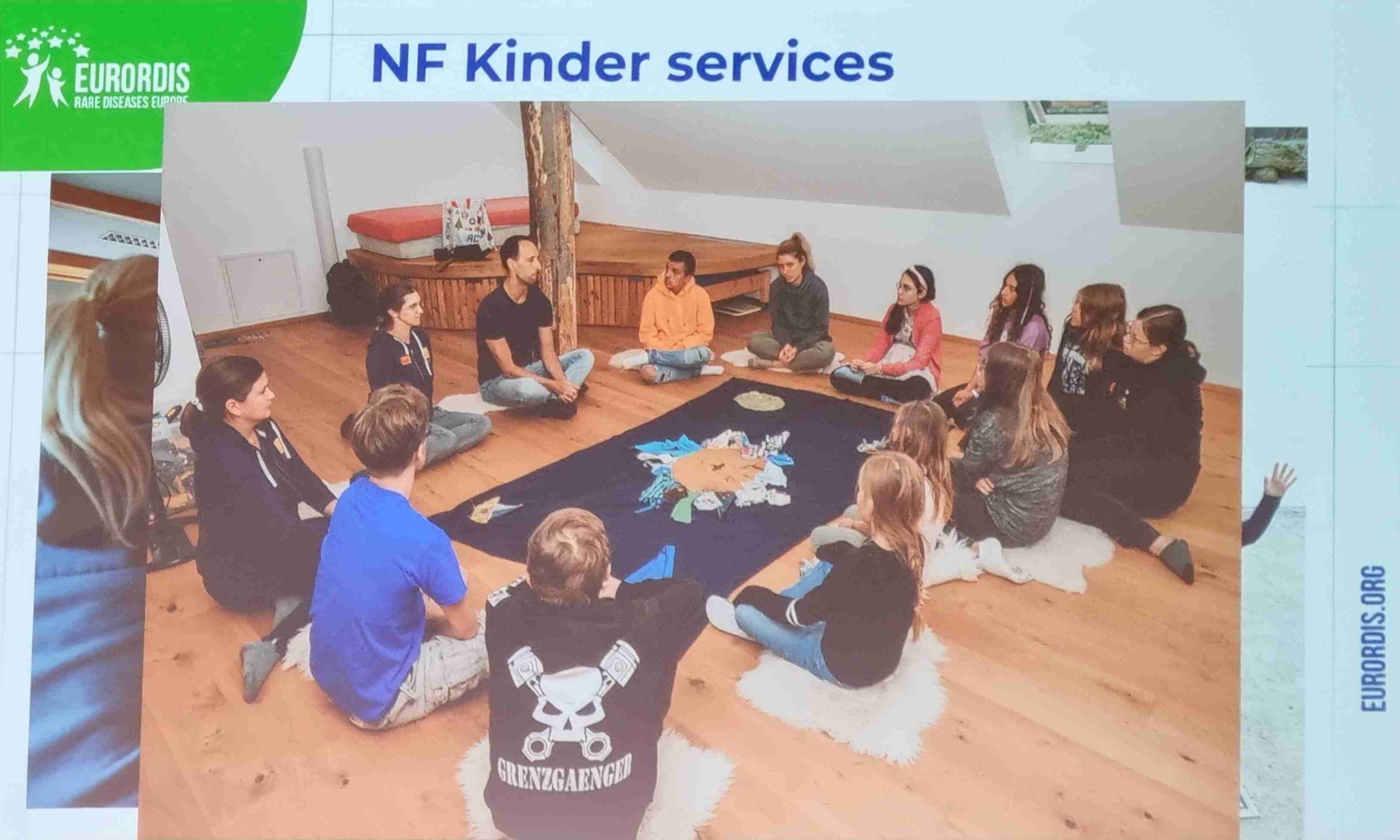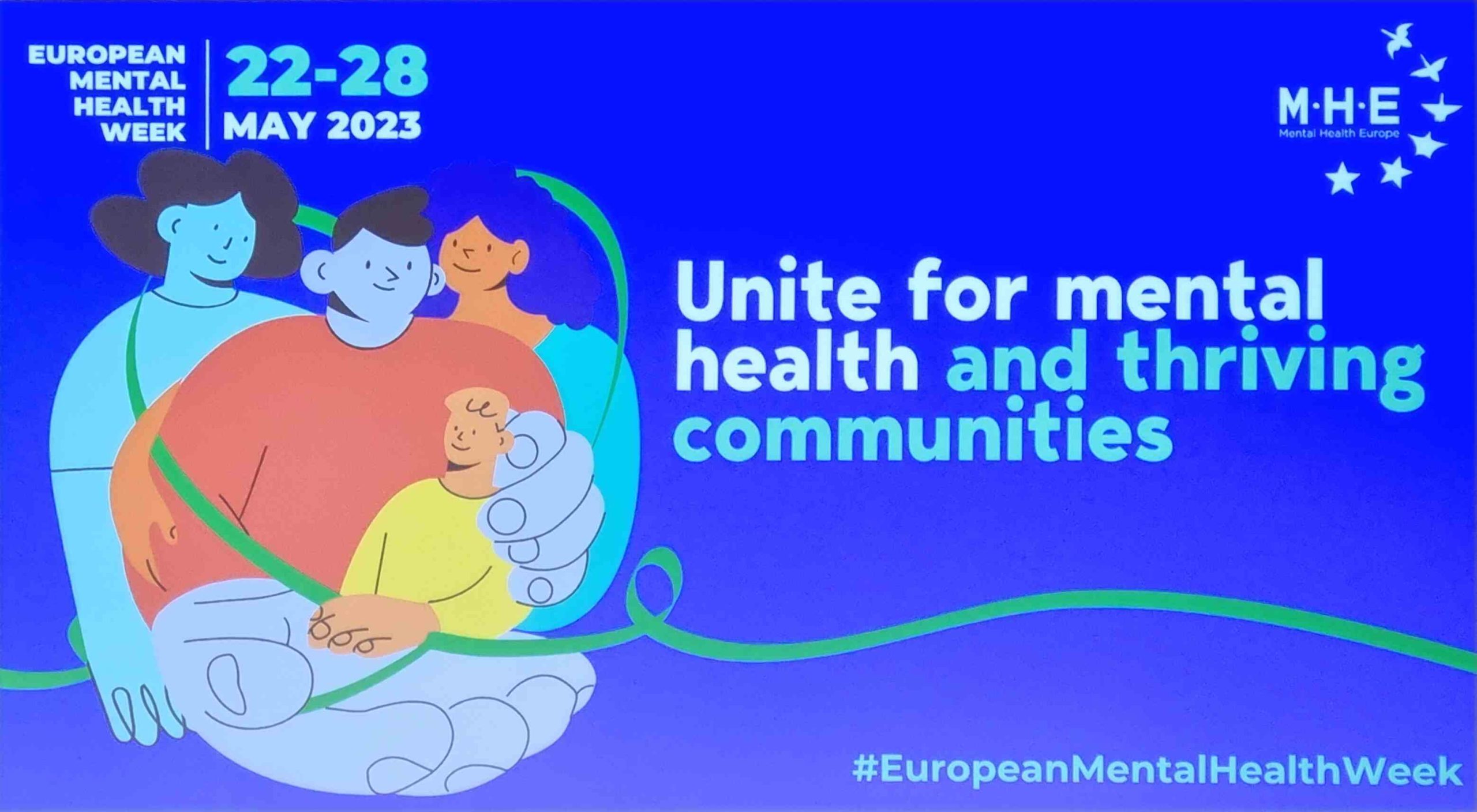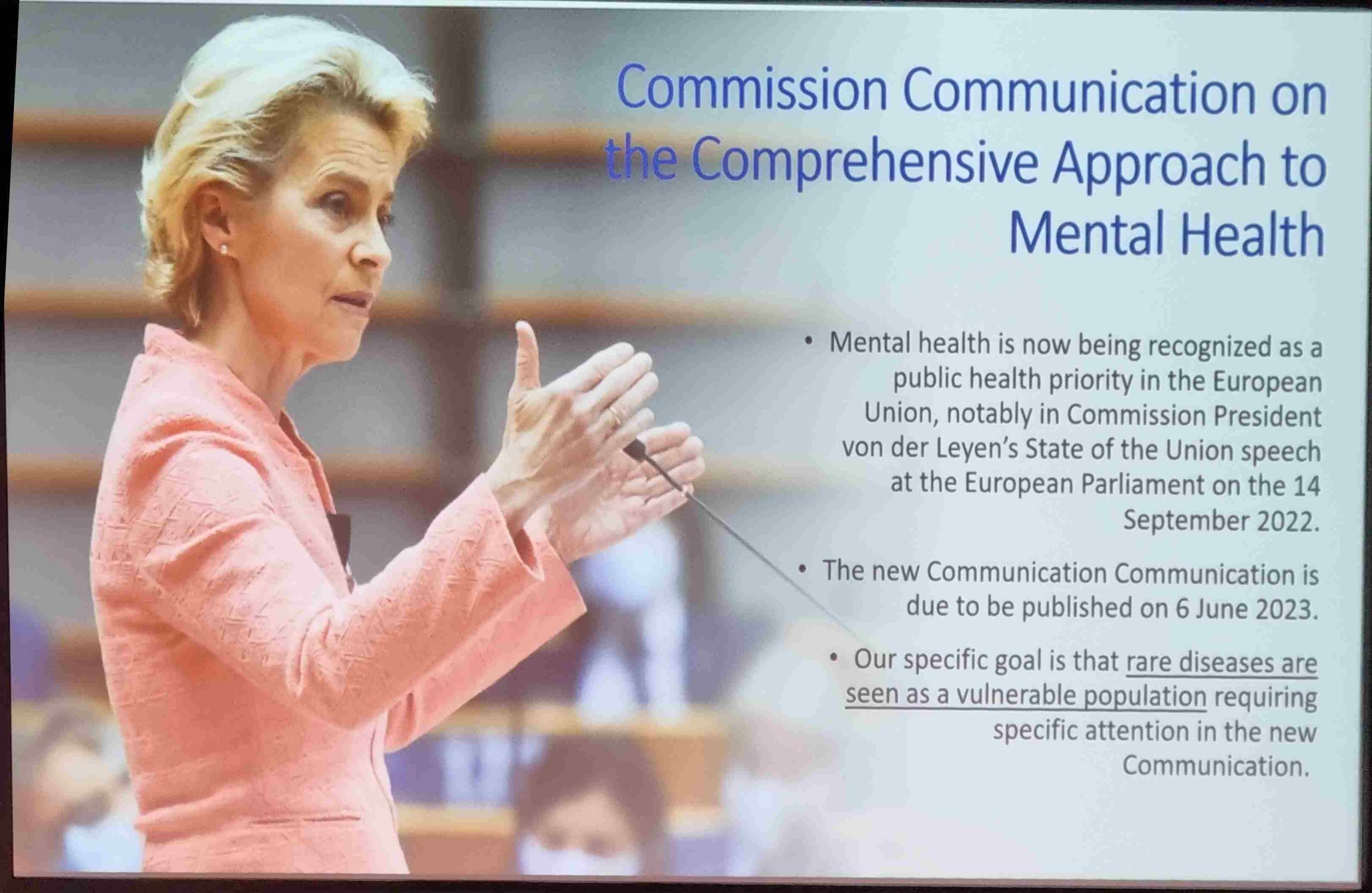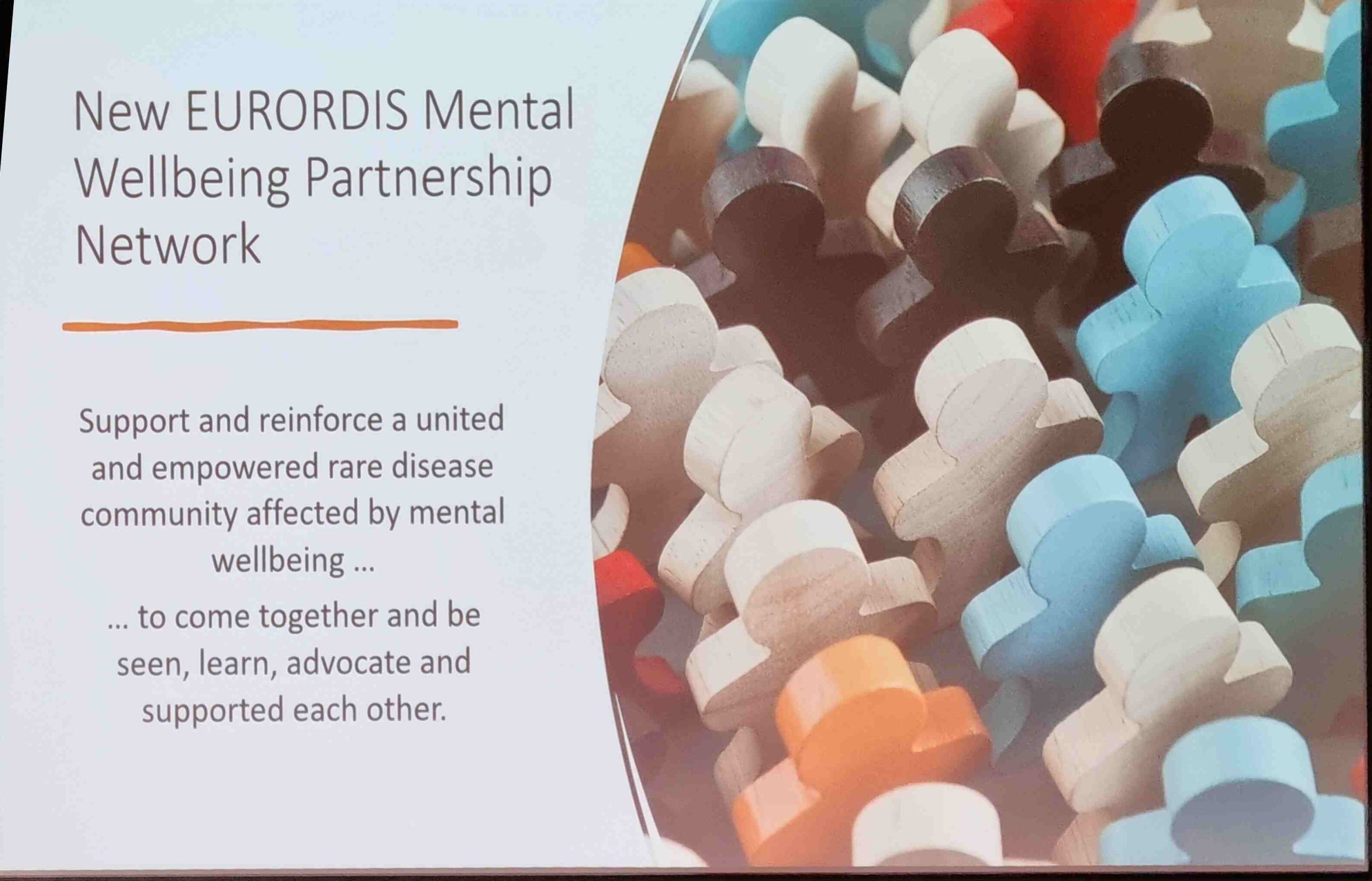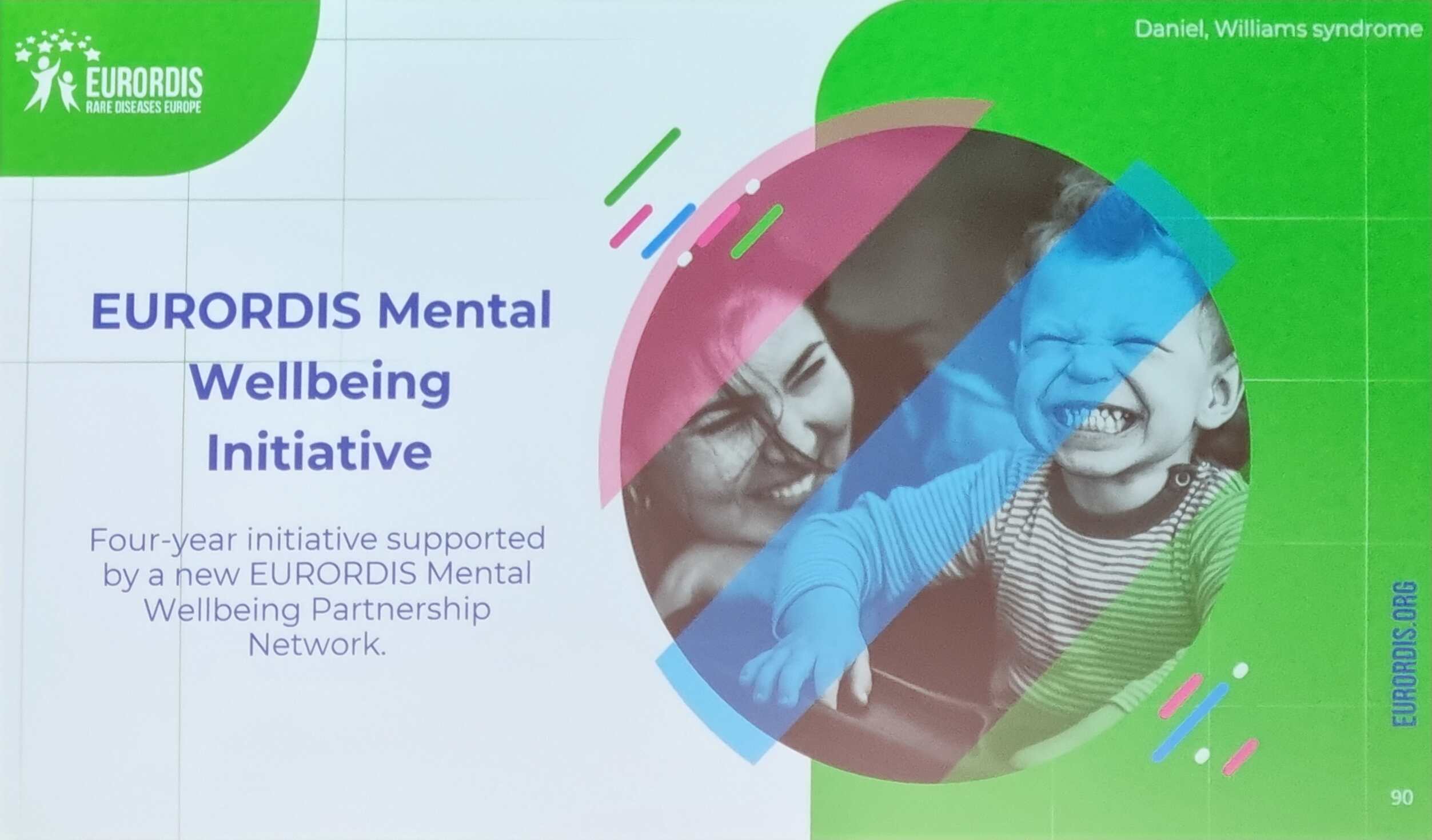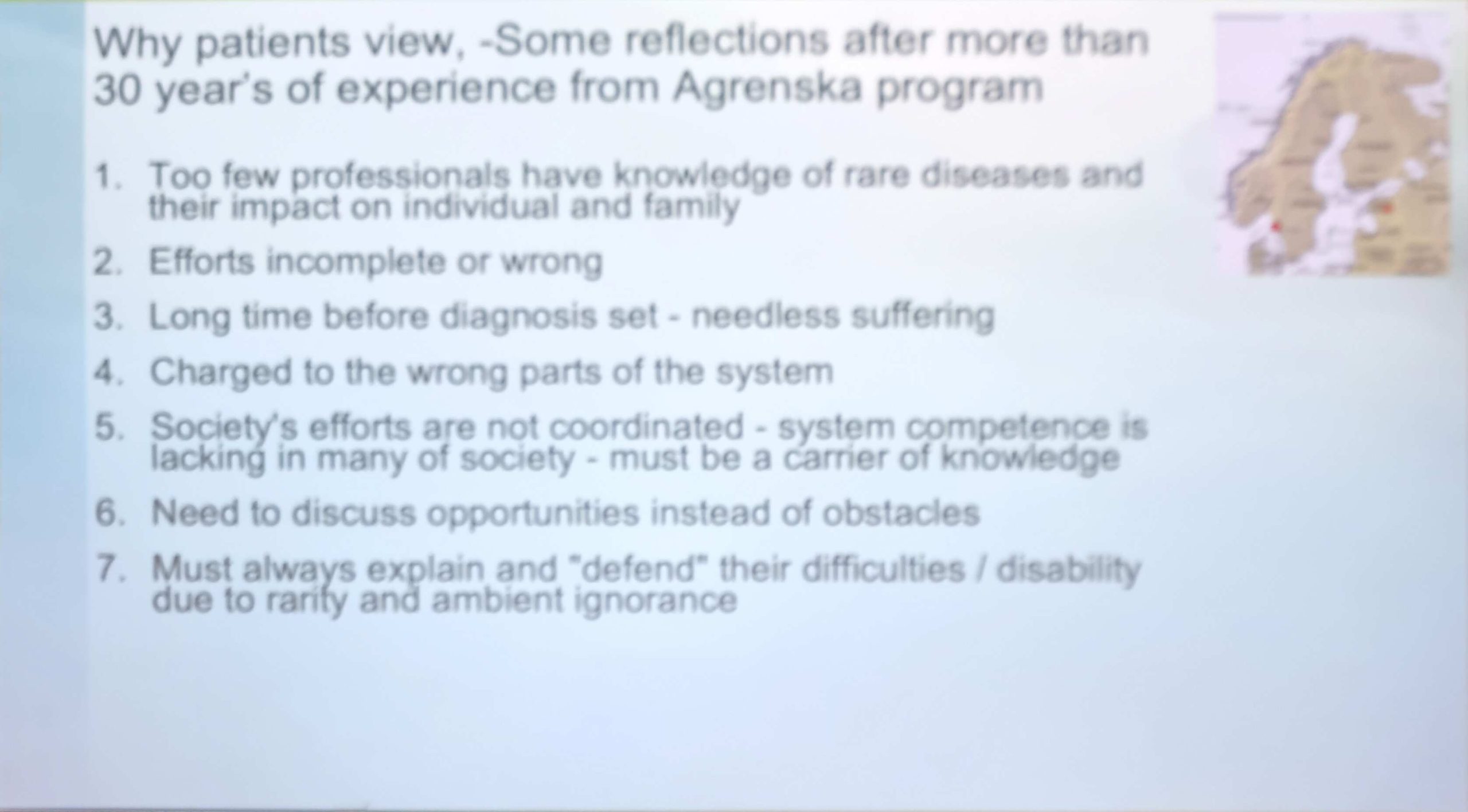Finally, Eurordis was able to organize a ‘real’ in person members conference. The last time this took place was in 2019 before the Corona pandemic.
From May 25 to 27, 2023 250 people from all over Europe gathered in Stockholm, Sweden.
25th of May
On the 25th of May there were 2 parallel sessions held: ‘training on digital safety and literacy in the context of the ongoing healthcare digitalisation’ and a workshop on ‘enhancing mental wellbeing in the rare disease community’. We chose to attend the second session.
The ‘European mental health week’ was from 22-28 May 2023 and the workshop was part of this event.
A number of people gave presentations. Then we were divided into smaller working groups and we started discussing the following topics:
- Diagnosis odyssey and access to treatment.
- Impact of living with a rare disorder on identity and family relationships.
- Living with uncertainty and the impact of trauma.
- Opportunity for access to education, work and independent living.
Each group rotated after 20 minutes so that all topics were covered by each working group. All discussed information was noted on a ‘flip chart’ and will be collected into a single document in the near future.
The groups consisted of individuals, often patients, from different countries. An enormous wealth of knowledge and experience was brought together.
At the end of all sessions, the moderators briefly summarized the main points and shared them with all attendees.
26th of May
On the 26th, a group session ‘lifelong holistic approach and full inclusion in society’ was kicked off. After some initial presentations, there was a panel discussion with participants from 4 countries (which included Dr. Cees Smit, himself a patient, from the Netherlands).
A mother of a child with a rare disease commented that, in retrospect, she has focused too much on her child’s disease and not seen her child as a whole person. Her child was alone a lot and had no friends. Another comment that was made is that women and men receive different treatment.
During the second part of the morning, a number of networking sessions were organized:
- National actions with impact: what worked in my country.
- What makes a difference to arrange lifelong integrated care.
- How does my or my family members condition affect my mental health.
- What obstacles do we encounter in our lives when living with a rare disorder and a (non) visible disability.
One of the topics discussed was whether or not to discuss or share your invisible condition with others in your environment. One person might do this, for example, during the introduction (such as at school). Another person prefers to say nothing. While another person might do this only in a familiar environment or when it has to be shared (for example, when an activity has to be undertaken where the condition is limiting).
Another point of discussion was whether or not to ask for help.
One of the participants had an answer for this question which her child could share with others at school:
- It’s not contagious.
- It’s nobody’s fault.
- It’s not going away.
- It does not hurt.
After lunch, 4 parallel networking sessions were held:
- Living with a rare disease in childhood.
- Living with a rare disease during puberty.
- Living with a rare disease as an adult.
- Living with a rare disease as you get older.
We chose the session in childhood.
This session consisted of forming a smaller working group of 3-4 people and someone brought in an experience/topic that was discussed within the group. Afterwards, each group shared a summary of the discussion.
A few notes:
- Spend time with your child (and deal with the medical issues afterwards). You can only use time once.
- Some parents experience trauma.
- As parents, you will have to learn to deal with some uncertainty when your child is out alone or with others.
- Everyone has a different (patient) journey through life.
- Eurordis has conducted a survey (the Rare Barometer) about living with a rare disorder in childhood. In total, 13,304 surveys were answered by people from 104 countries, in 27 languages and over 1,900 conditions.
- The results will be available in June 2023.
- One participant mentioned that they had organized a camp for siblings of a family member with a rare disorder.
A group diner was organized in the centre of Stockholm. A range of nationalities were represented at every table and this is of course also meant we had time to get to know each other better.
27th of May
On the 27th there was another morning session consisting of the same workshops as yesterday. This time we have chosen the during puberty session.
First the panel members spoke and then people from the audience could ask questions and share experiences.
A few notes from this session:
- One panellist said he has many friends who accept him for who he is. It is not always possible to go out together and that is not a problem.
- Key words are: networking, social inclusion and access to, for example, facilities and public transport. The latter is often a problem, especially if you are in a wheelchair.
- You can often exercise despite your condition. This allows you to develop yourself in several ways and it is also important to establish social contacts so that you are not alone.
- Organizing (family) camps is experienced as a very positive activity. This activity helps you develop socially. In addition, this can also help develop language skills (especially at international camps), become more mature and independent.
